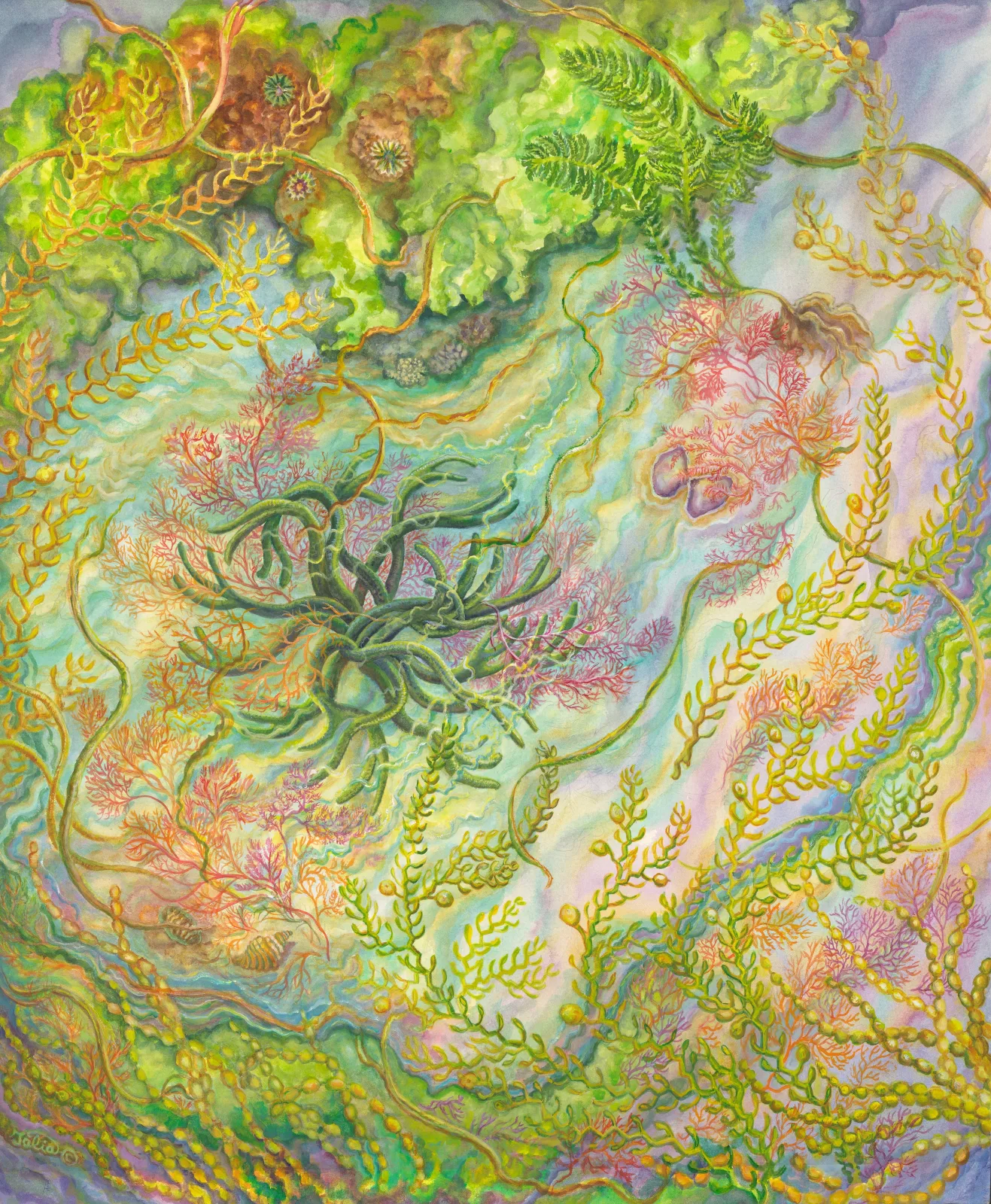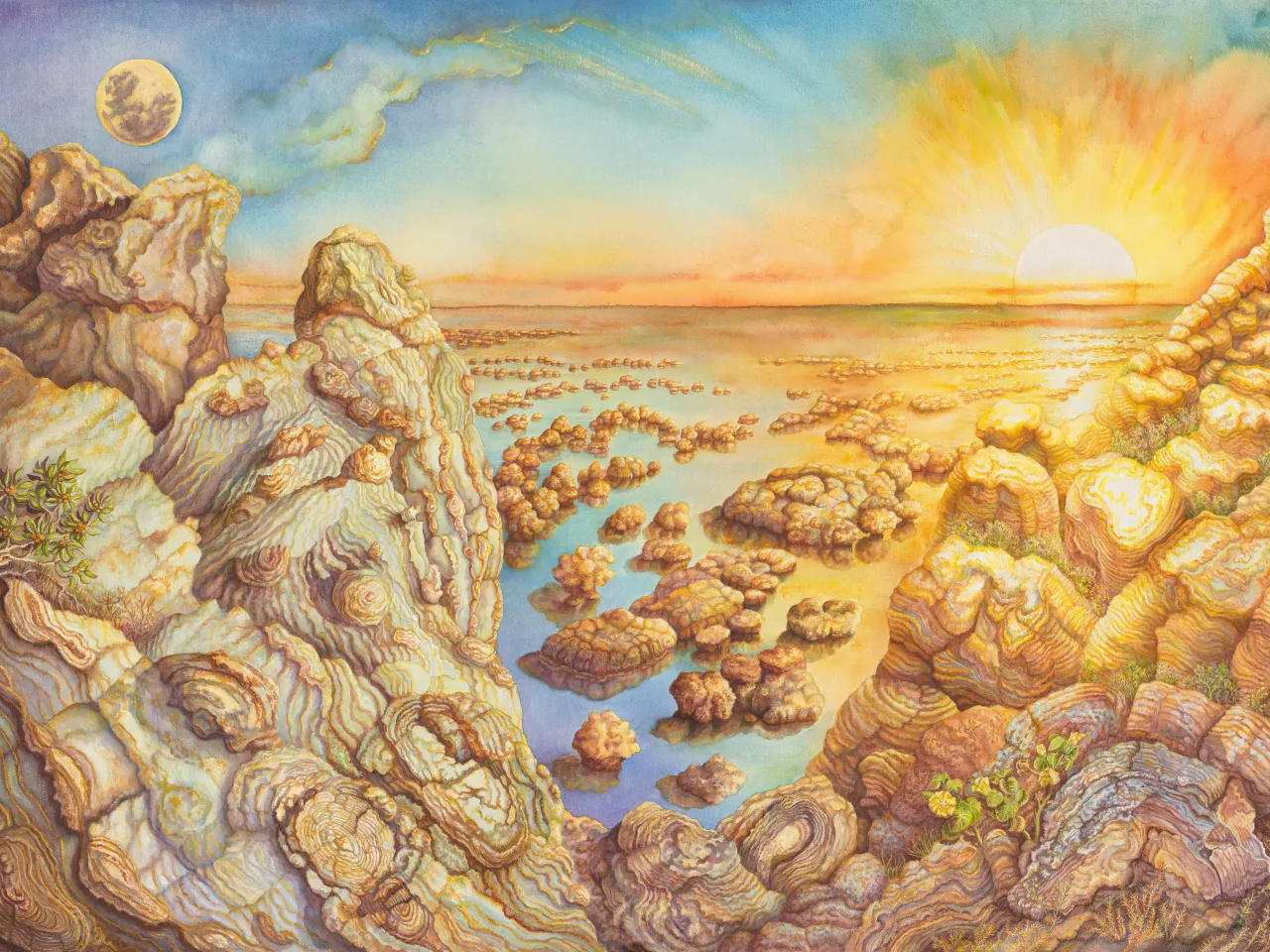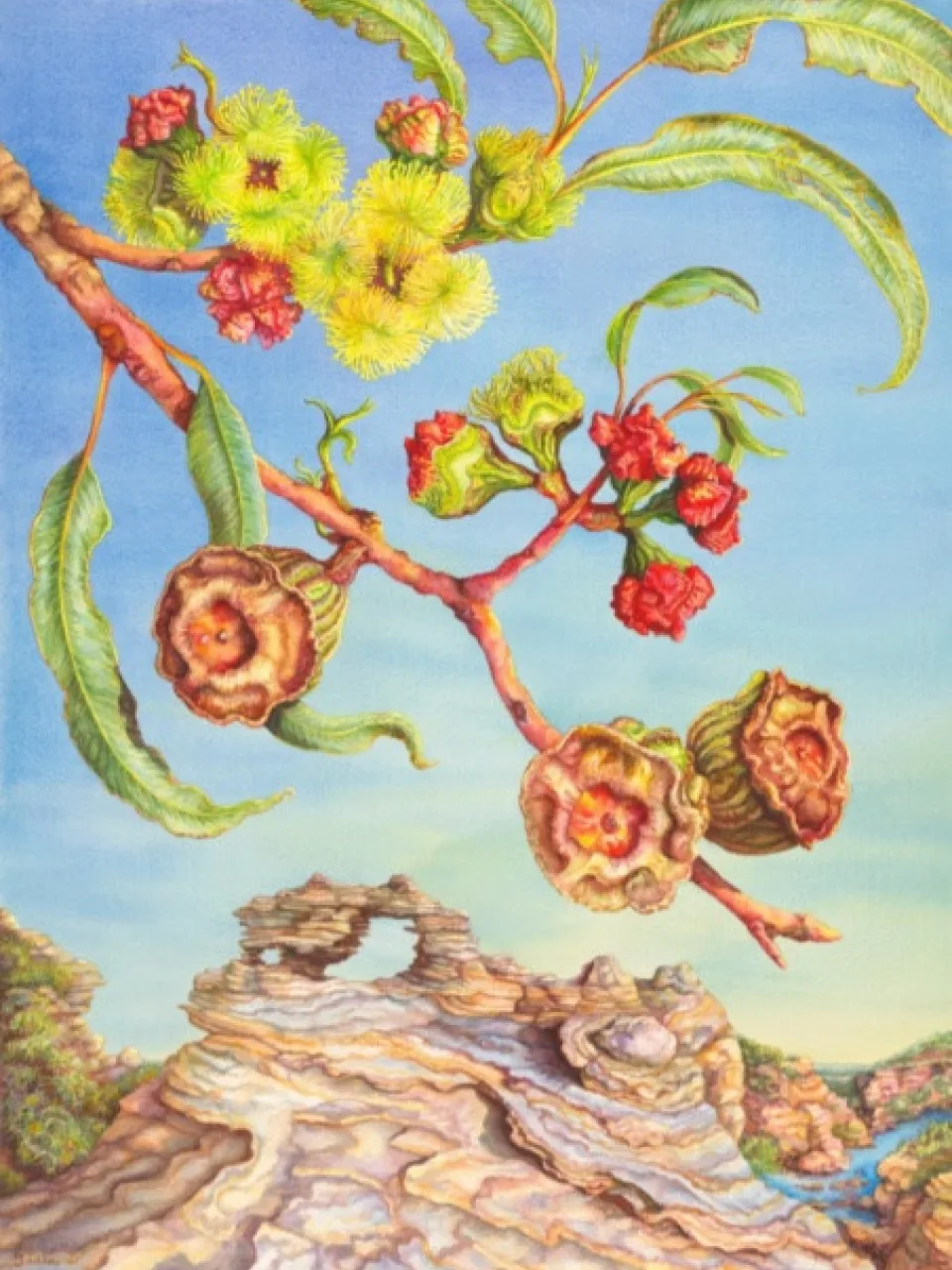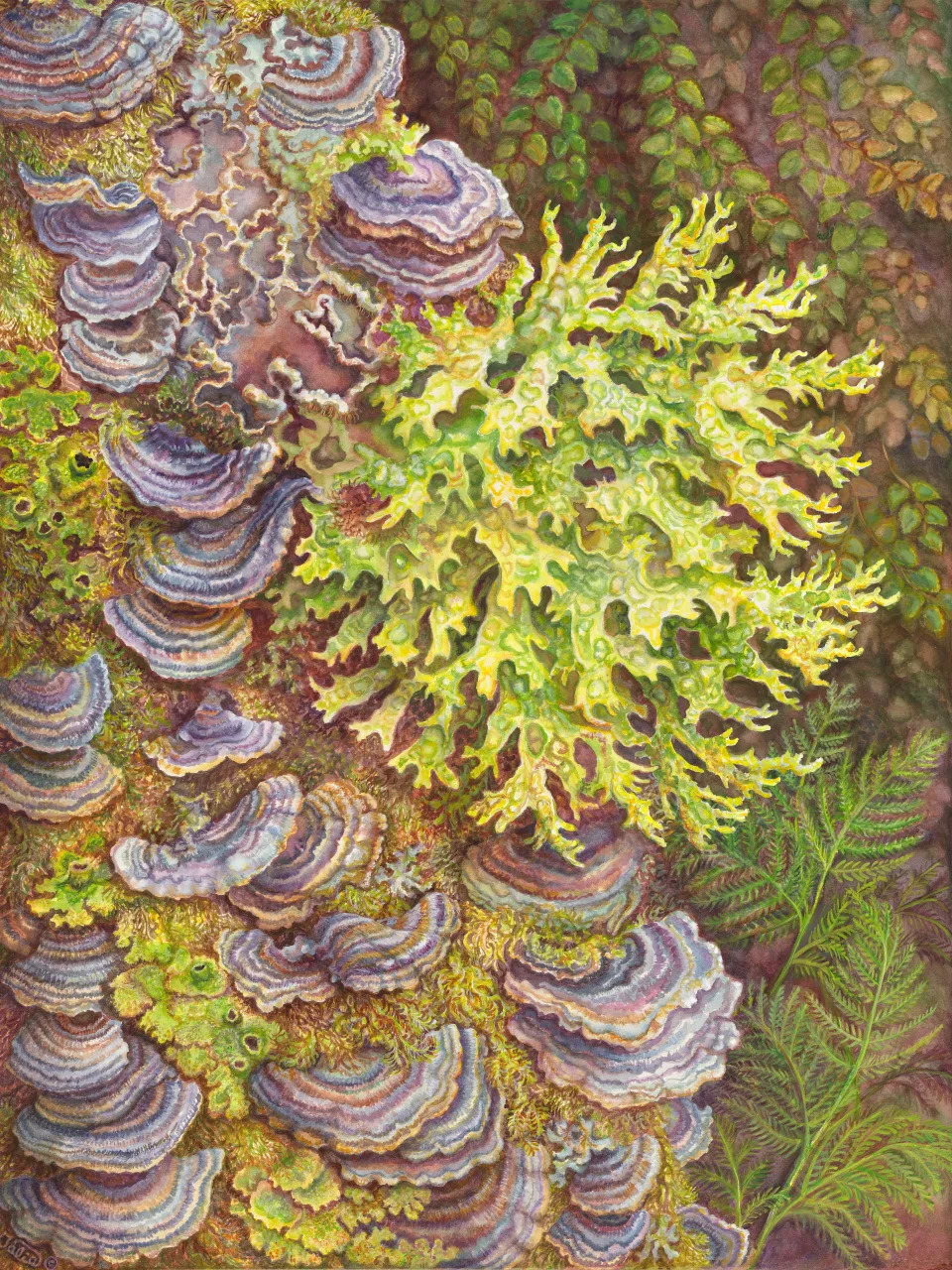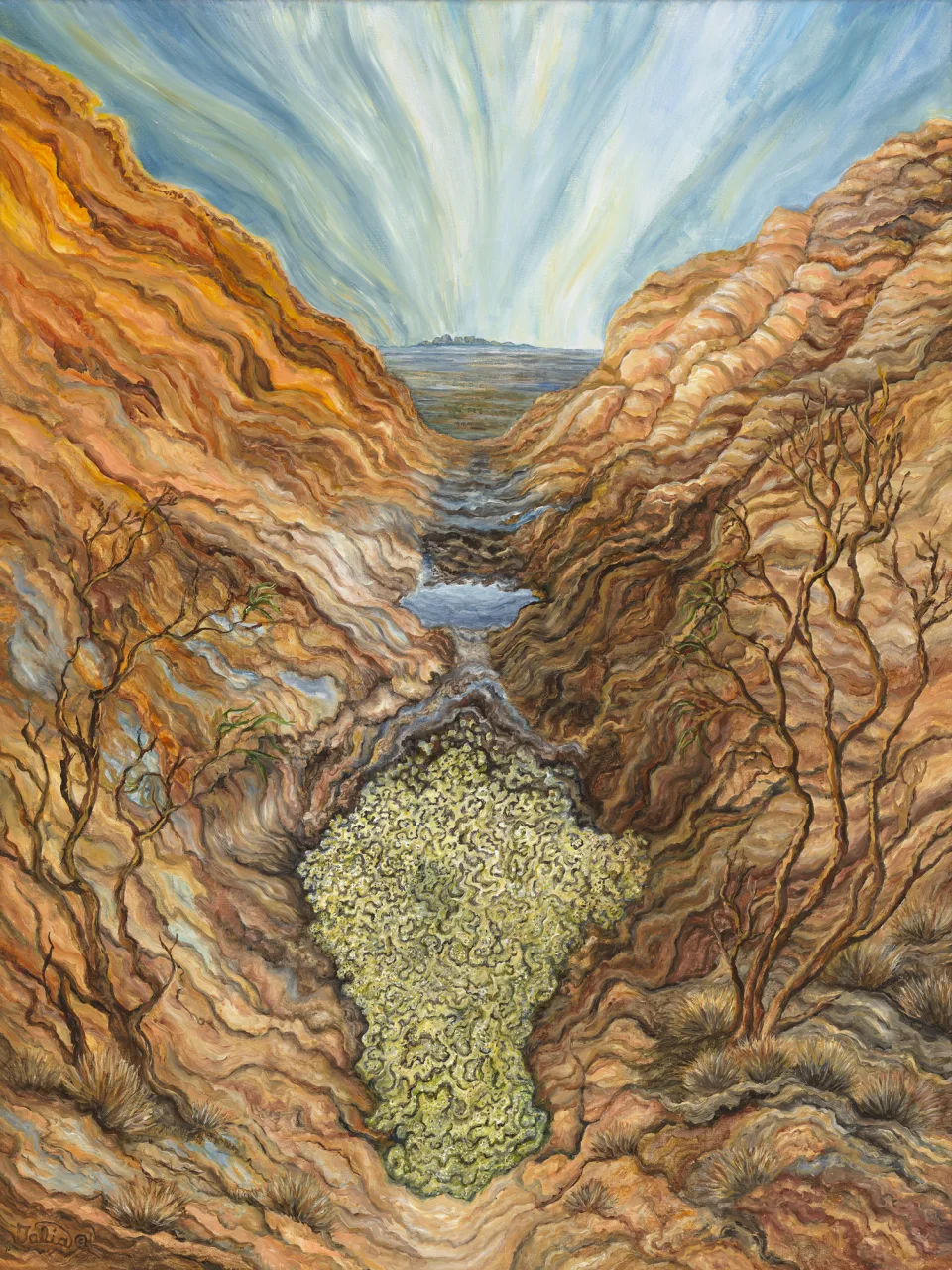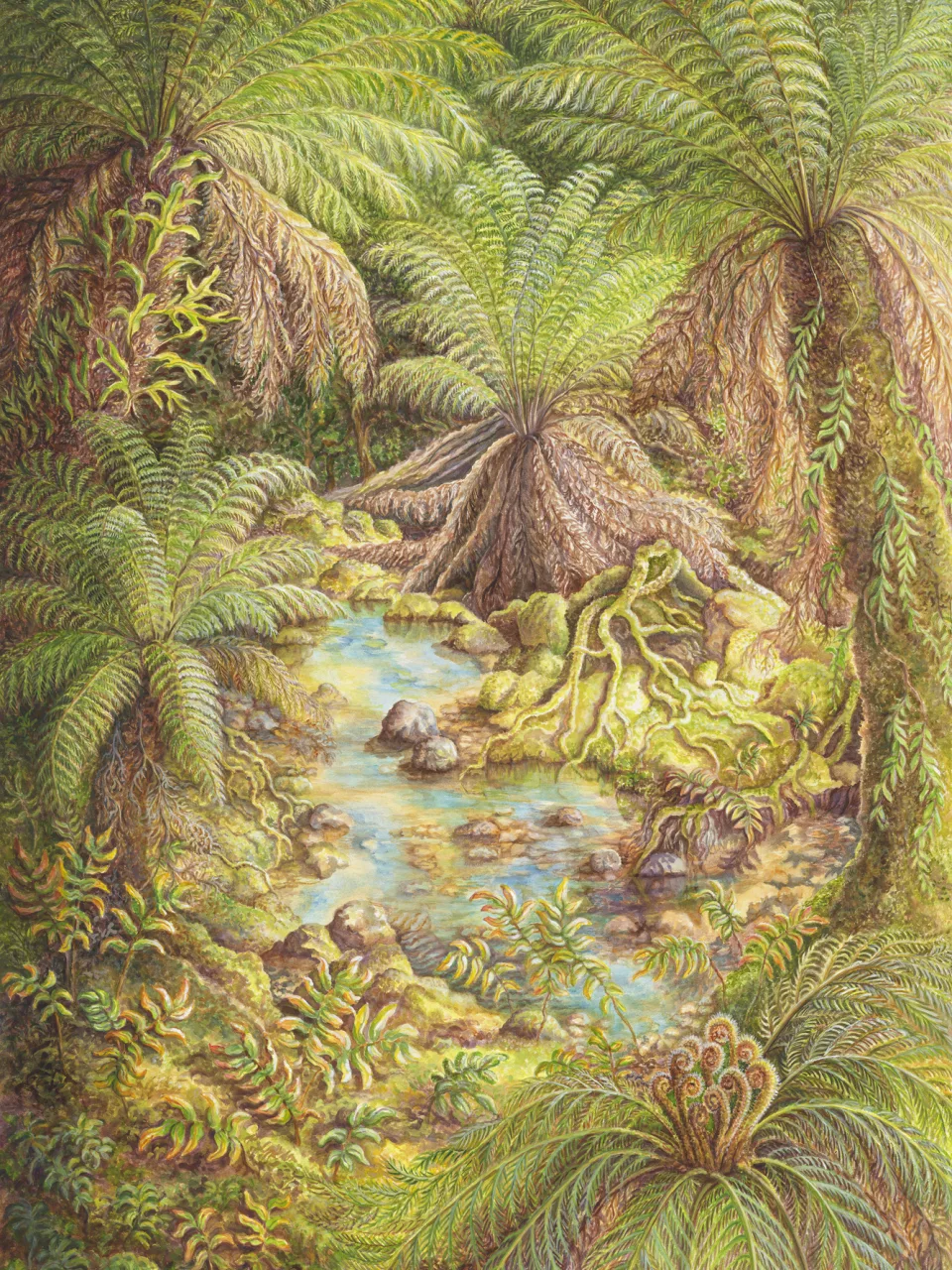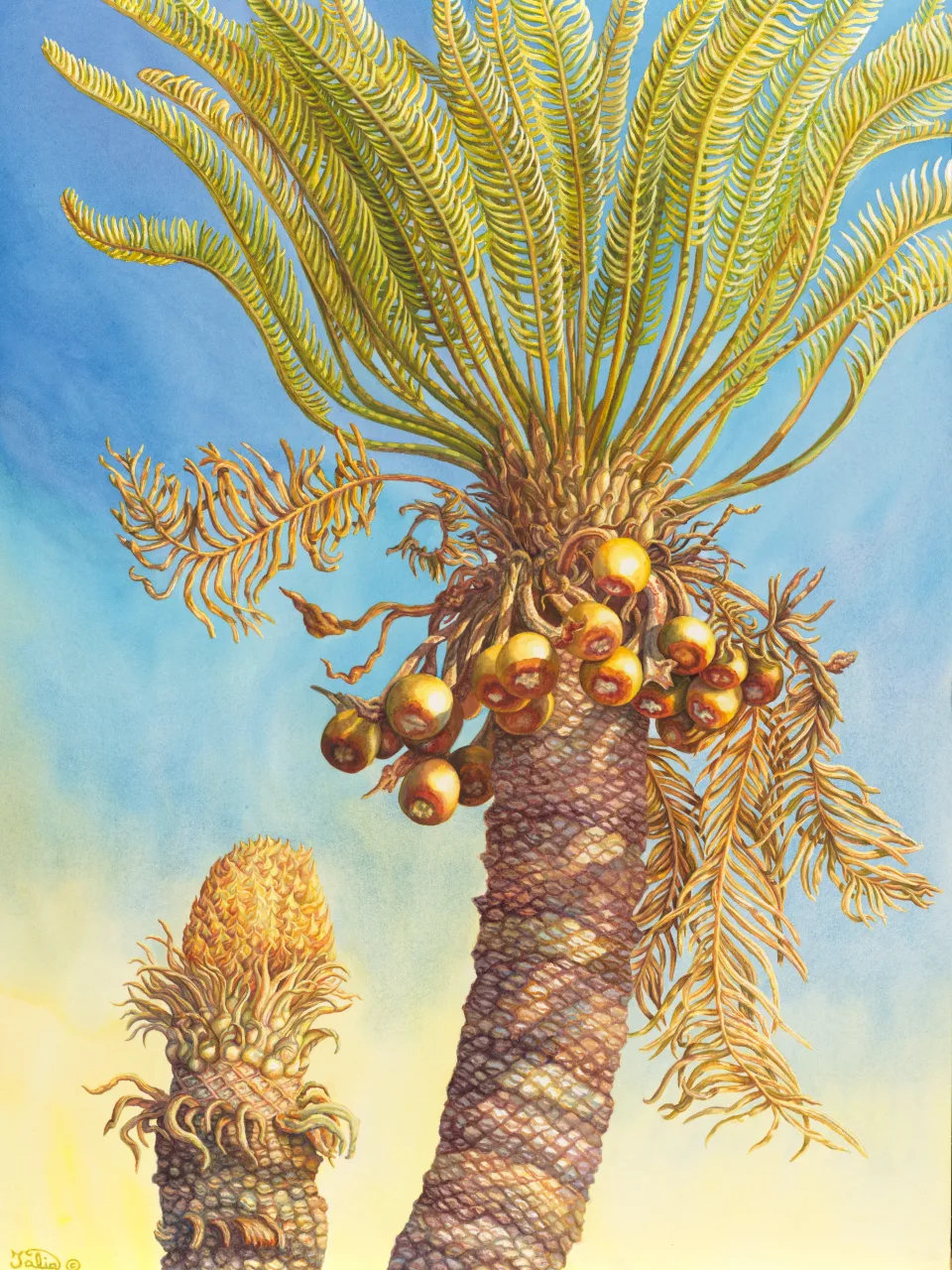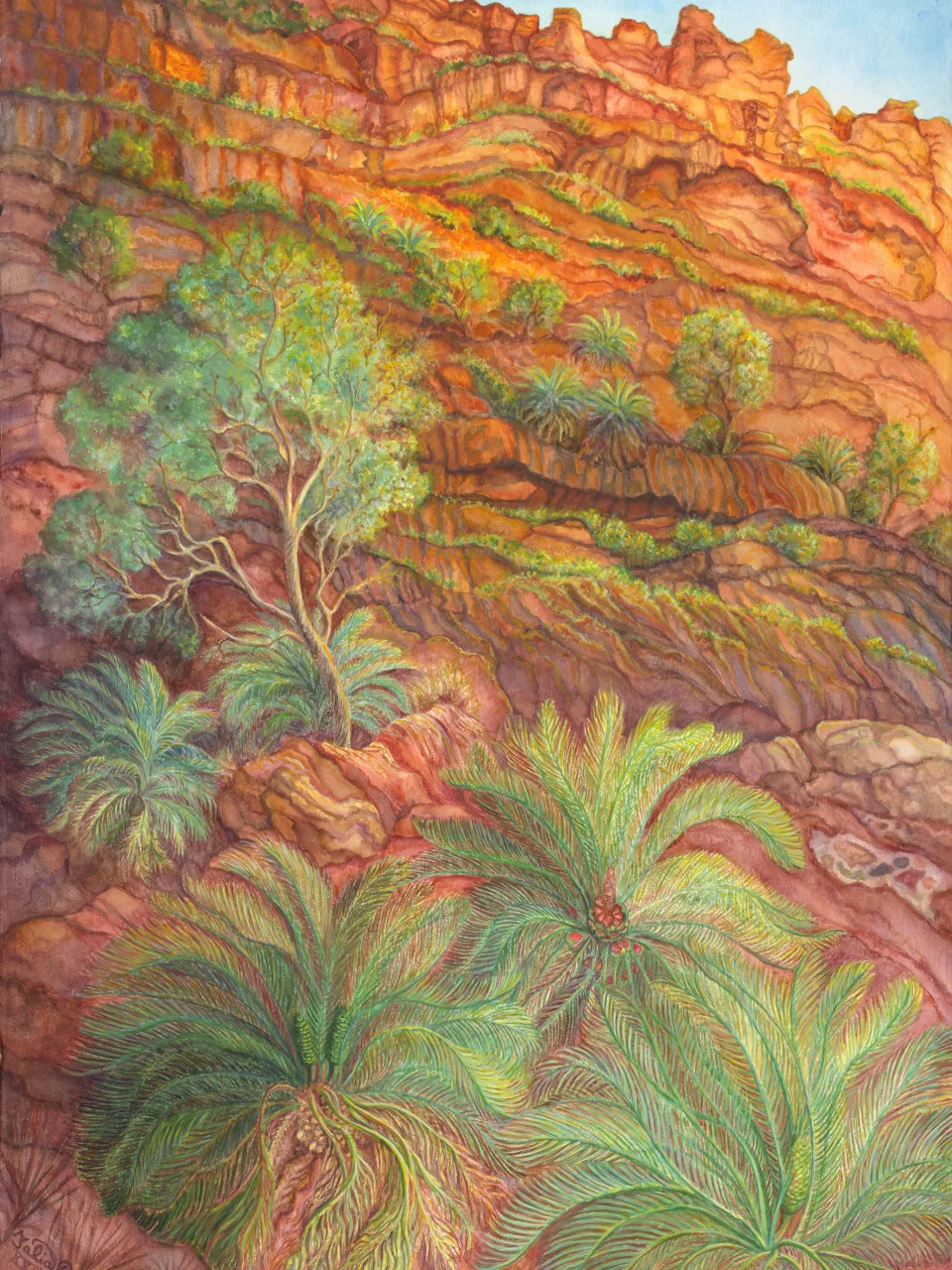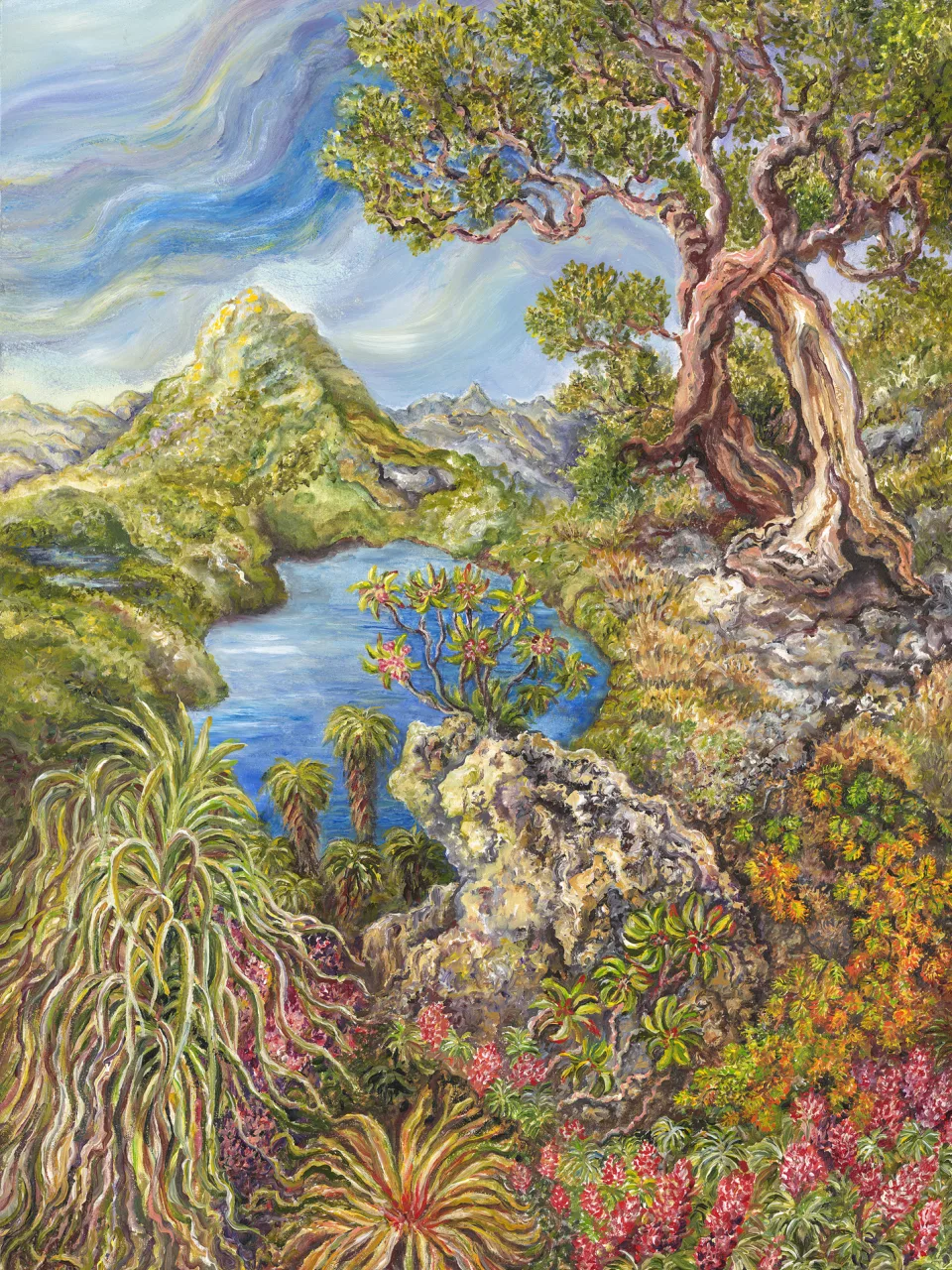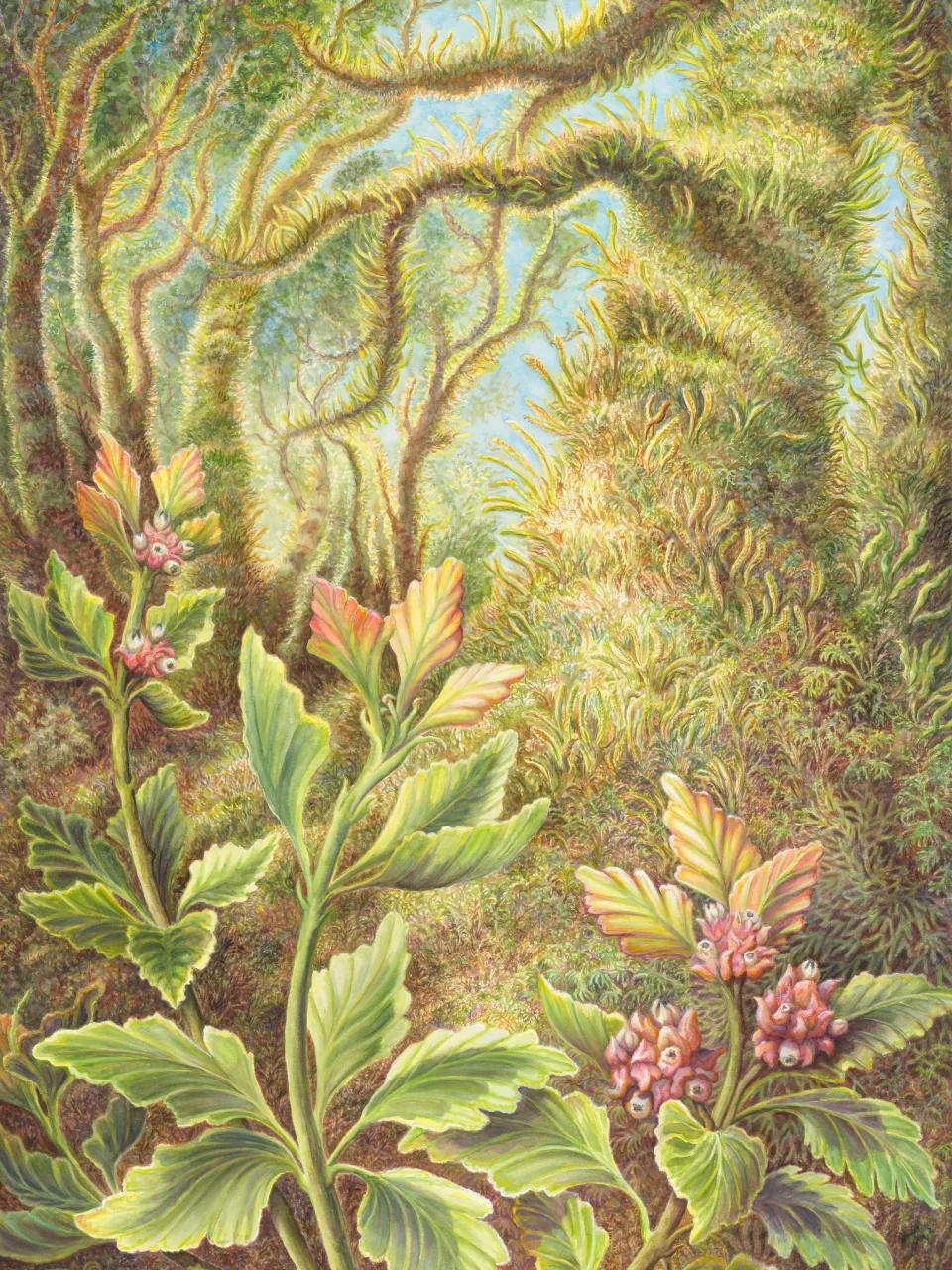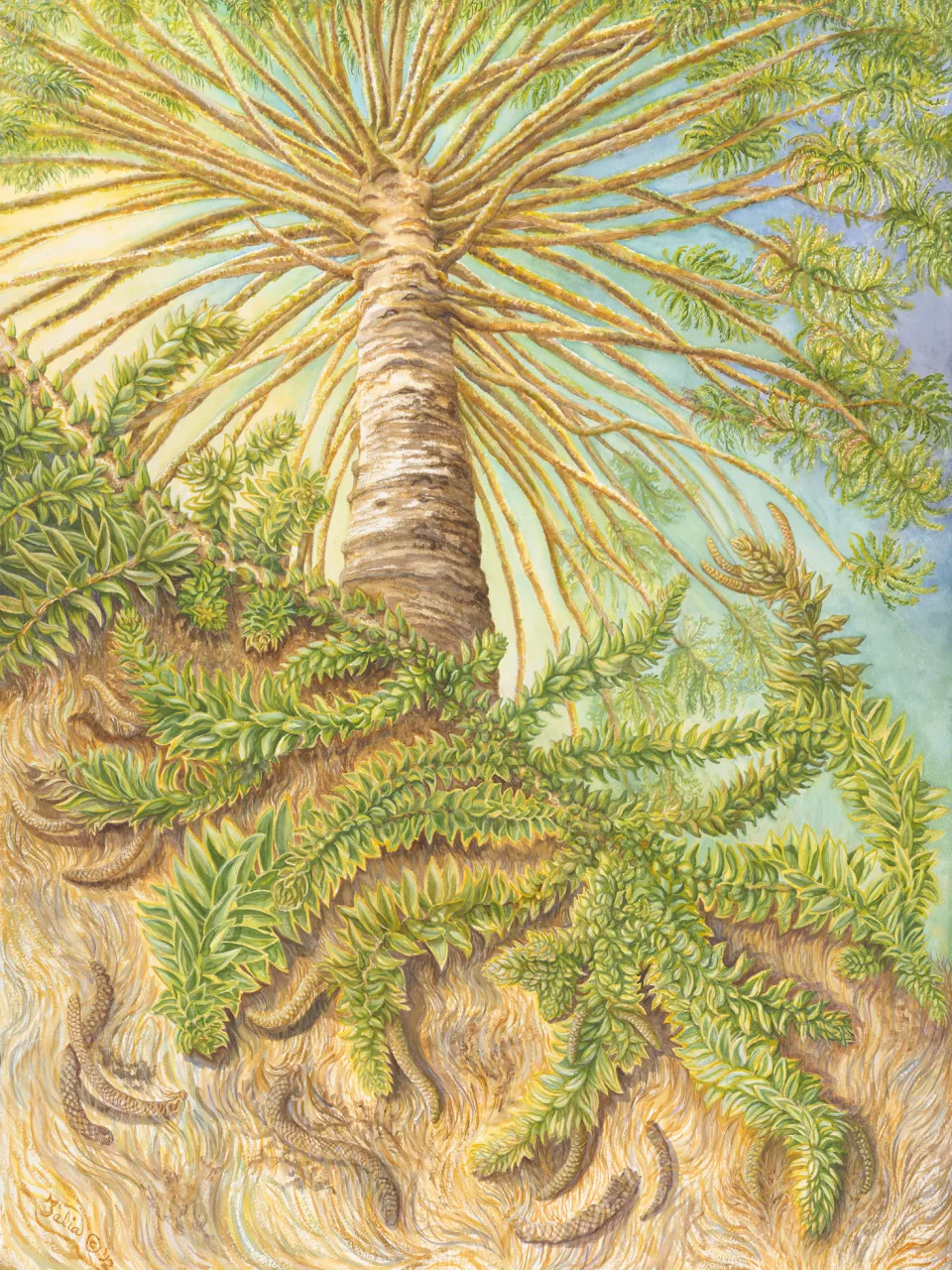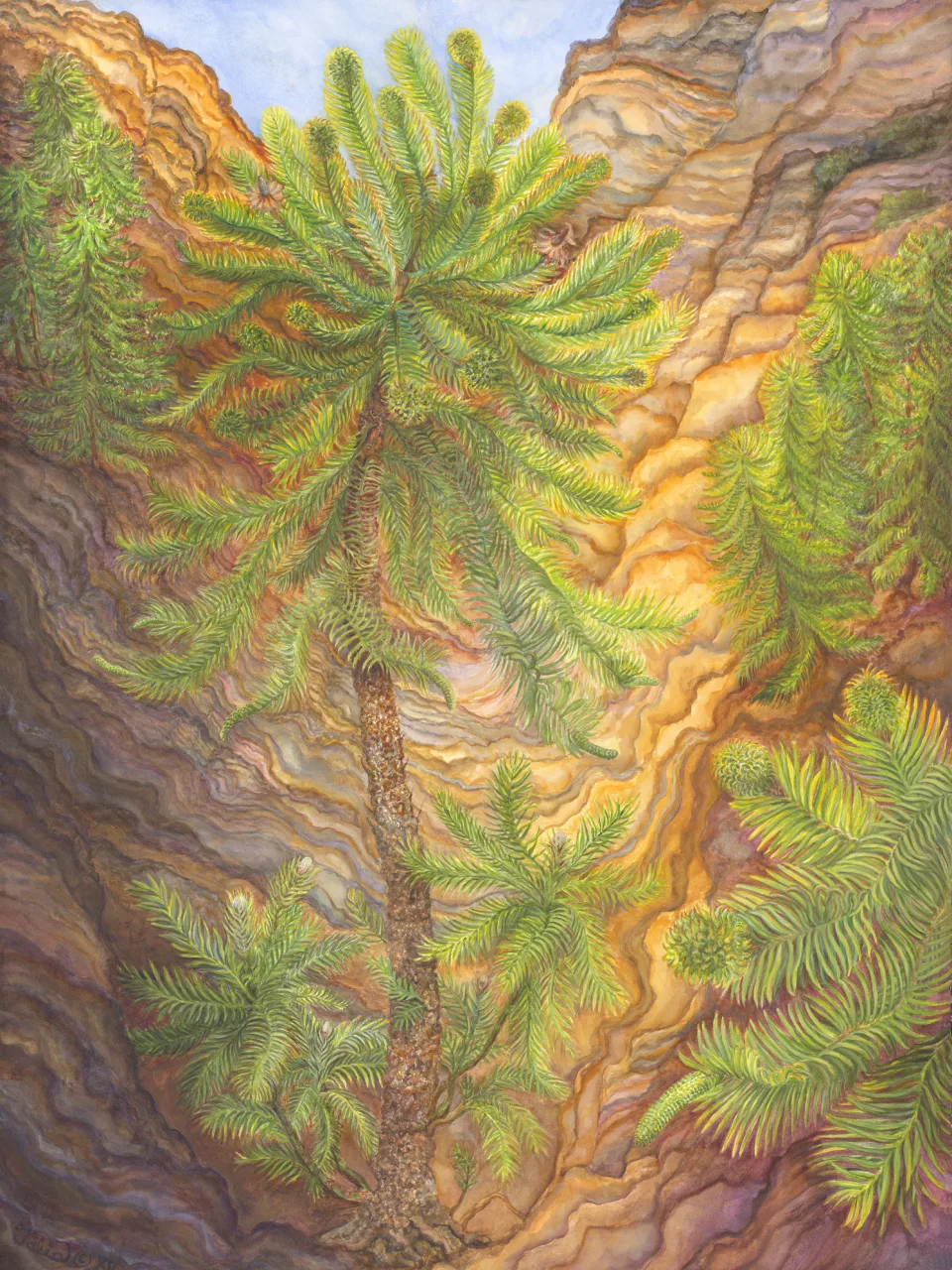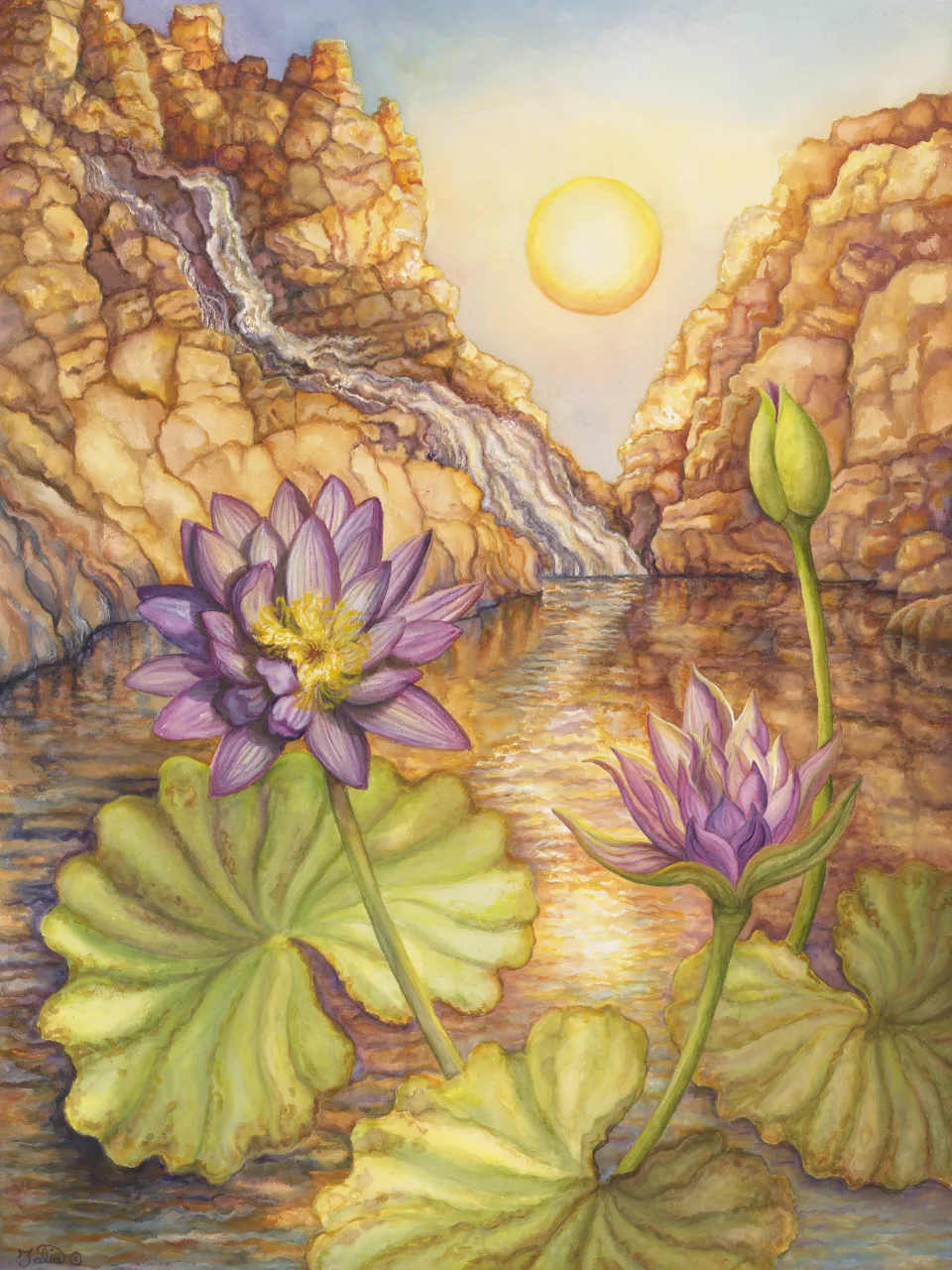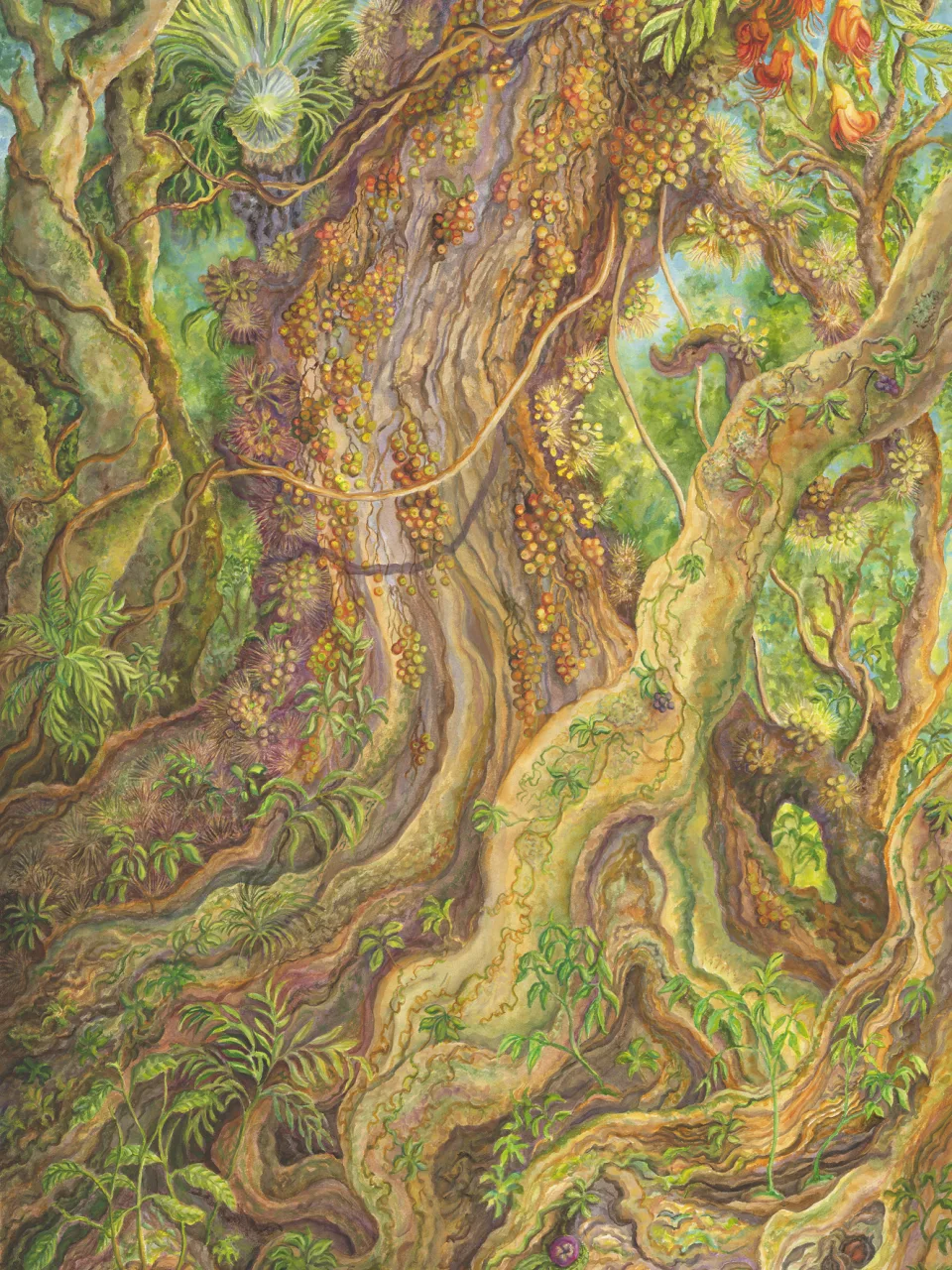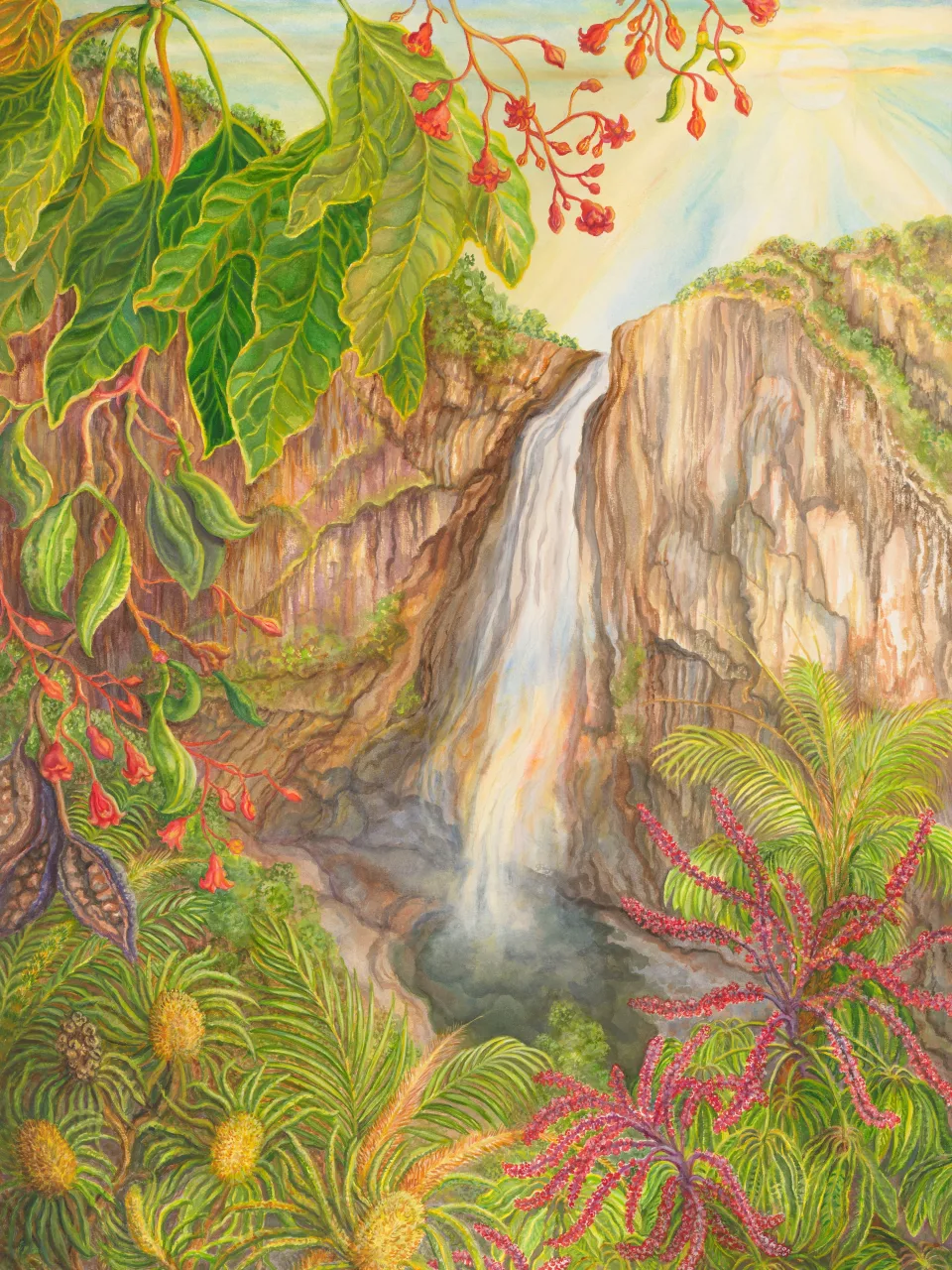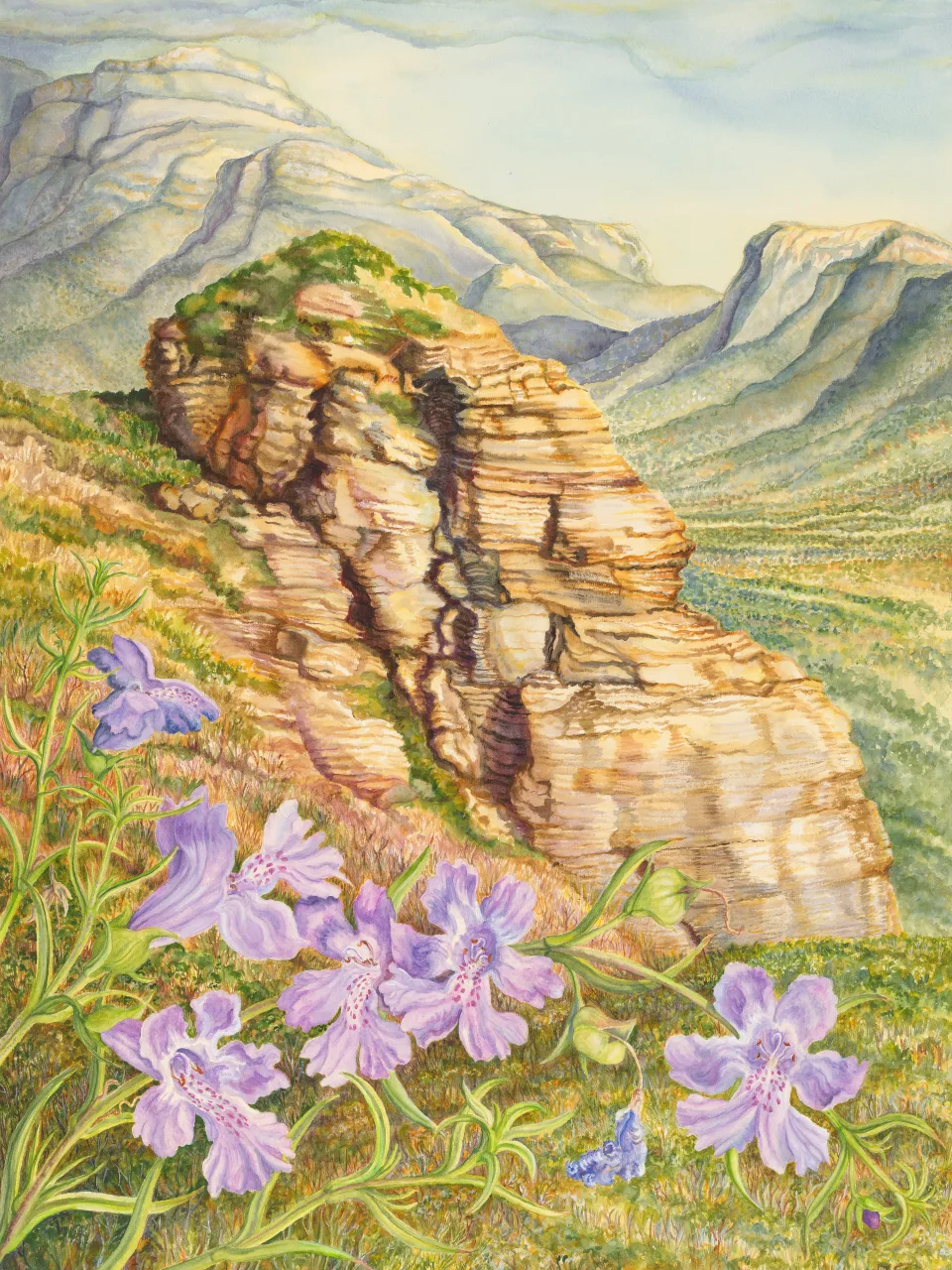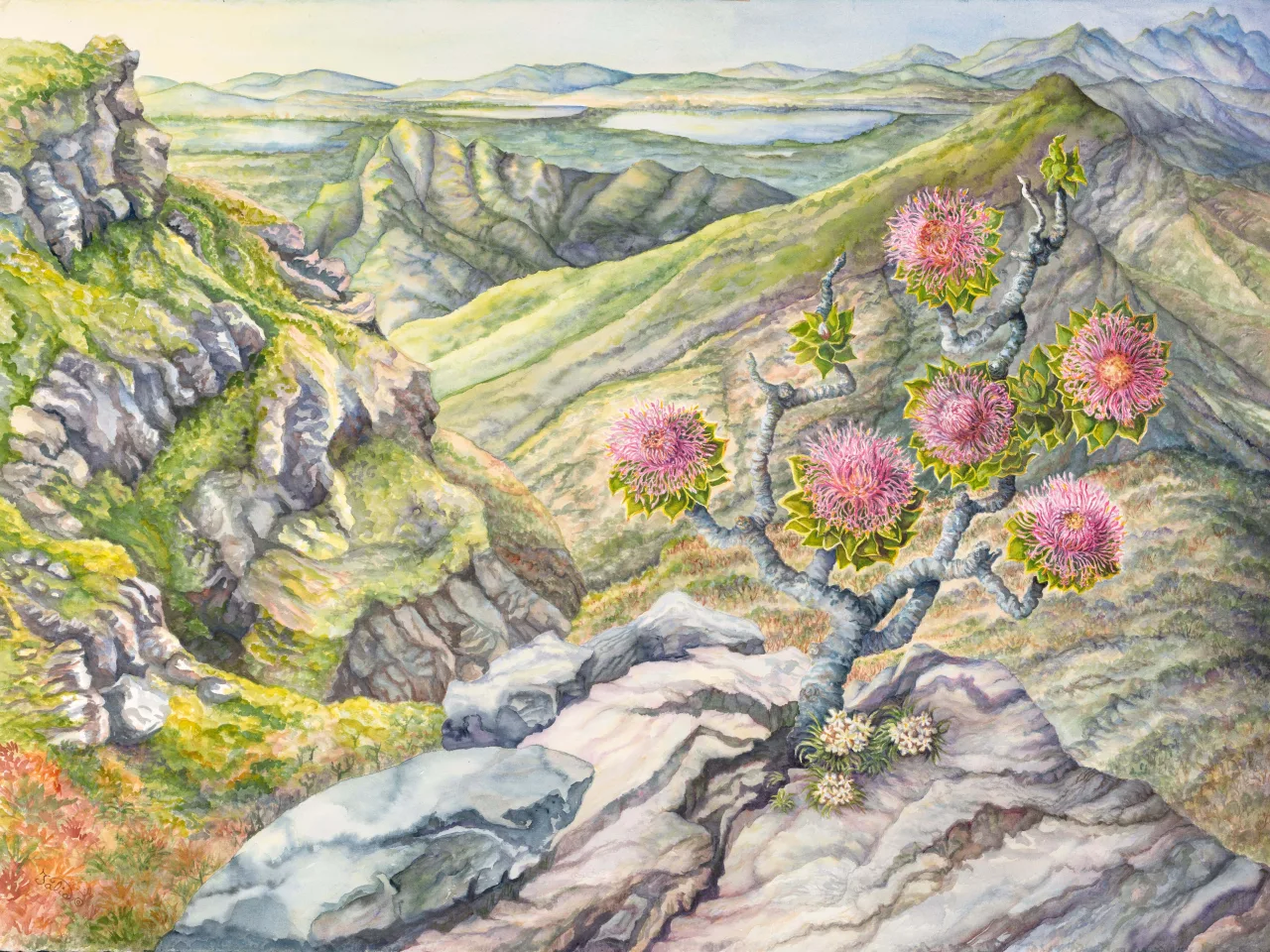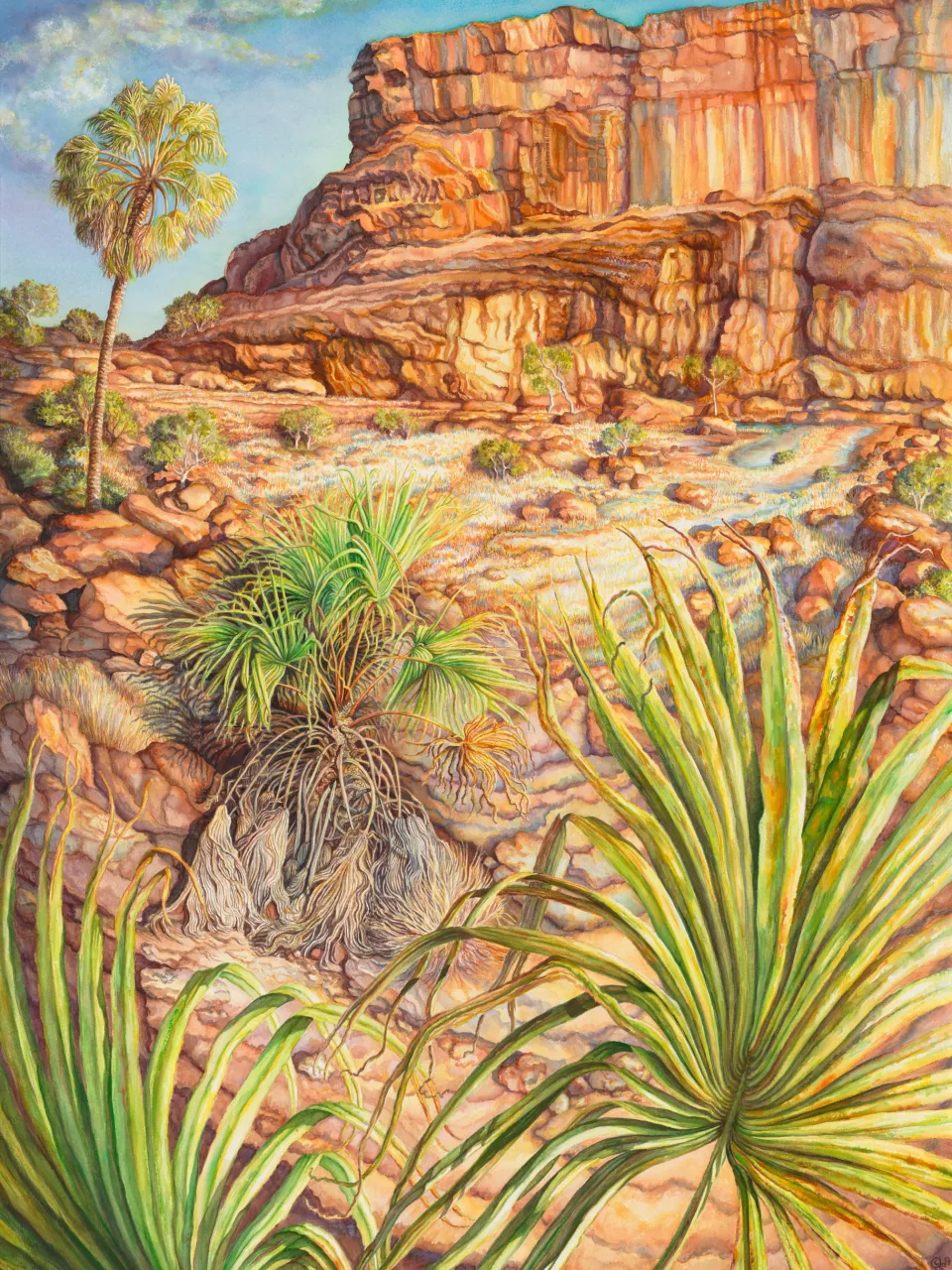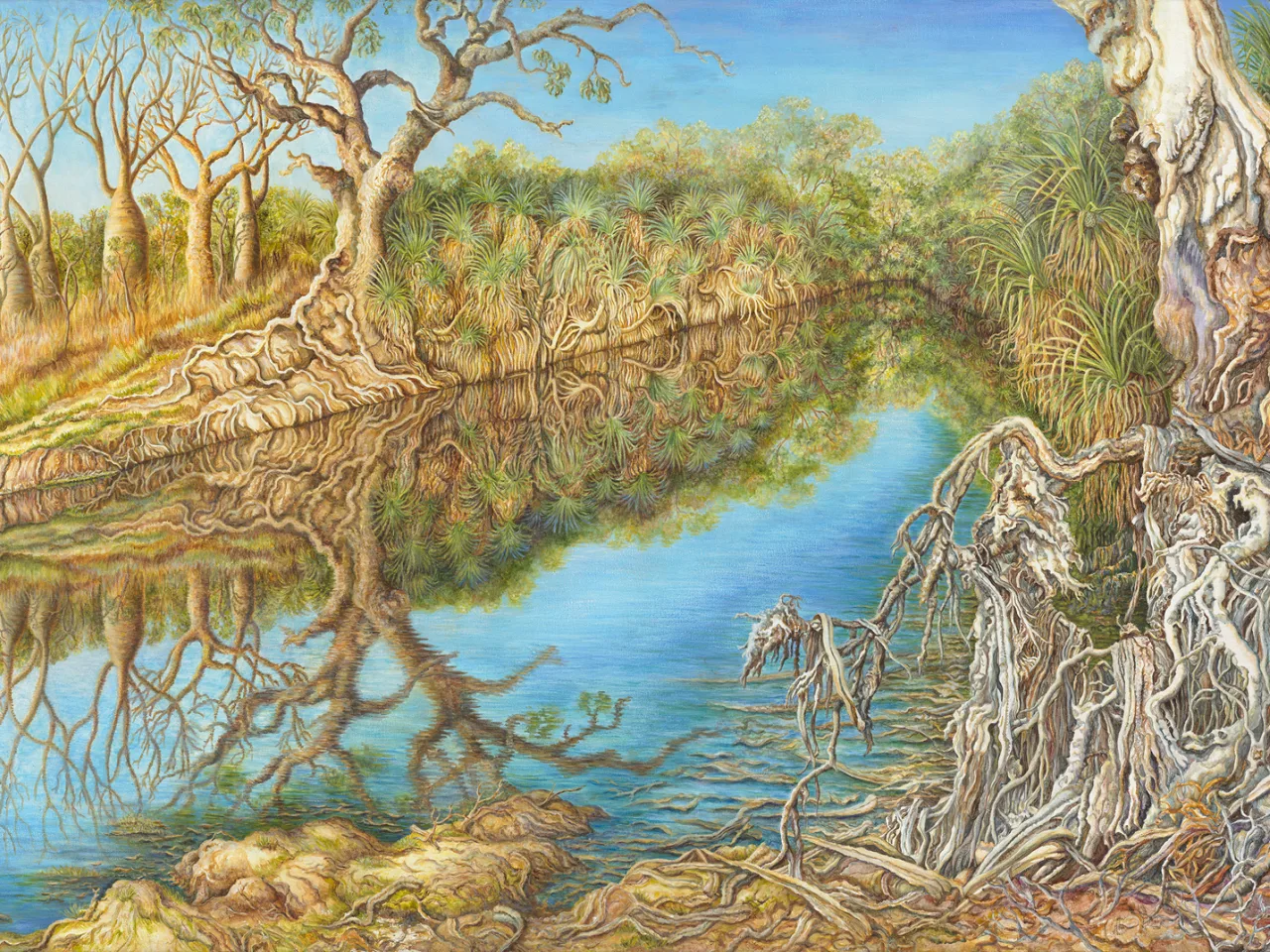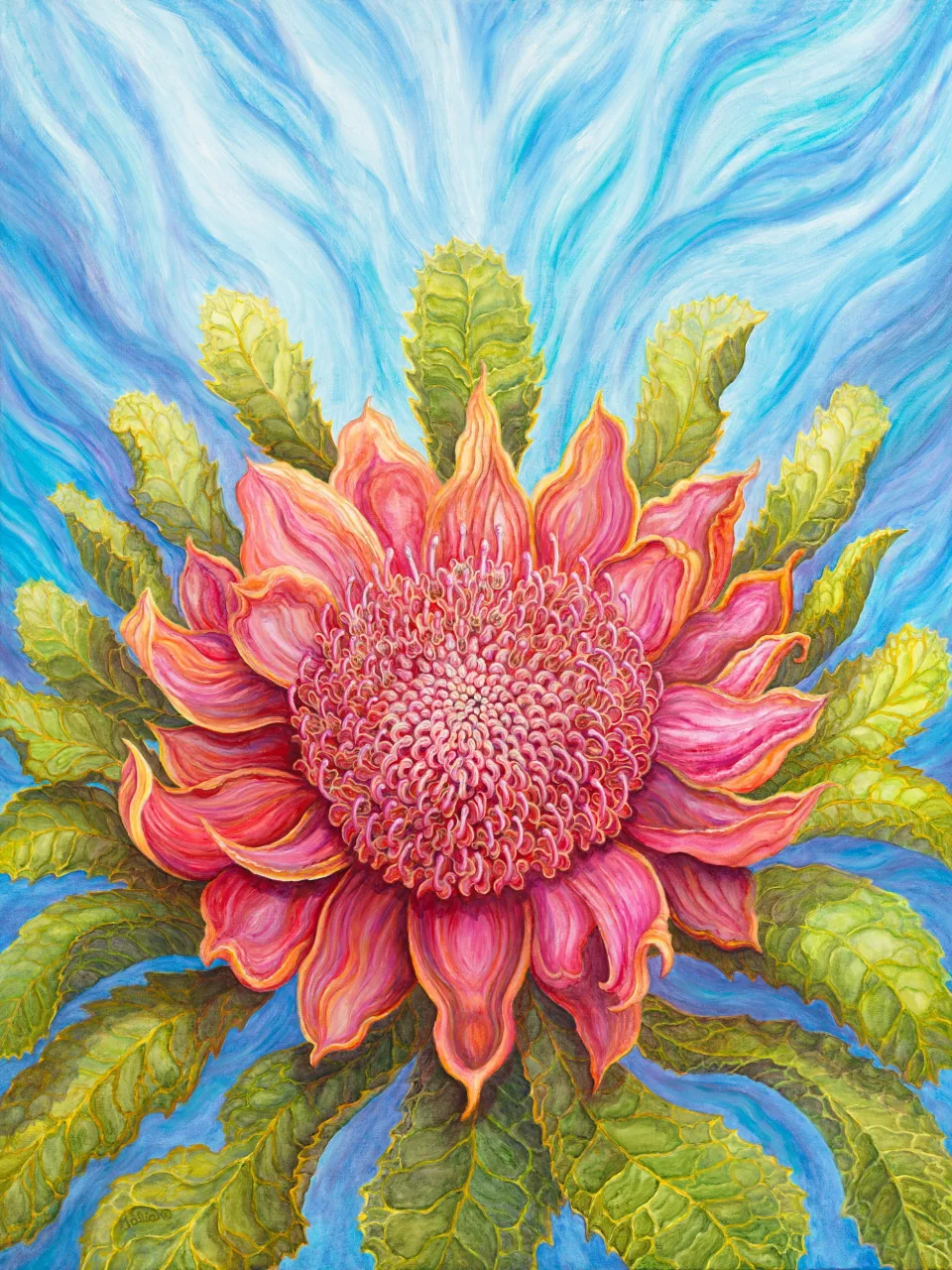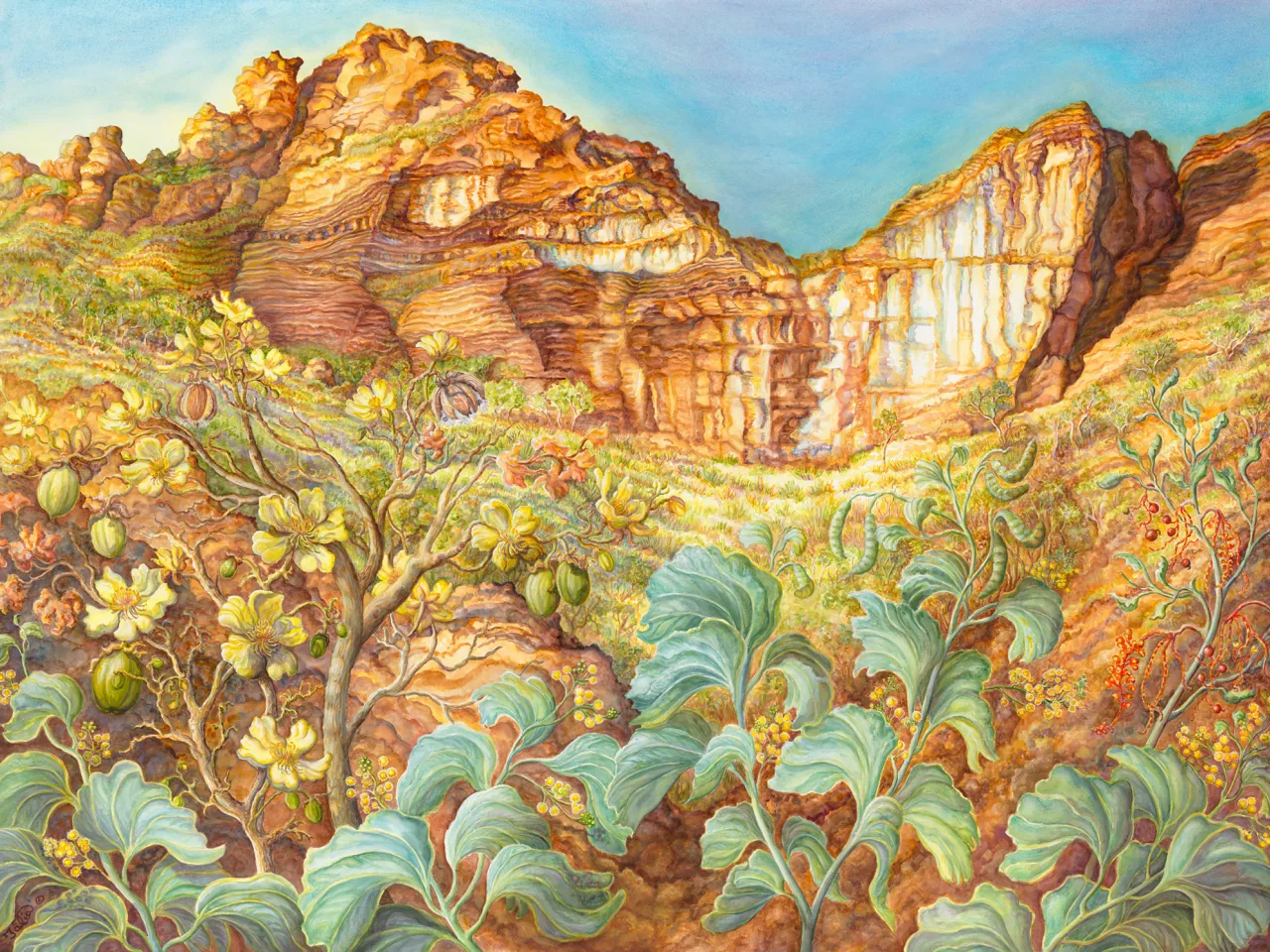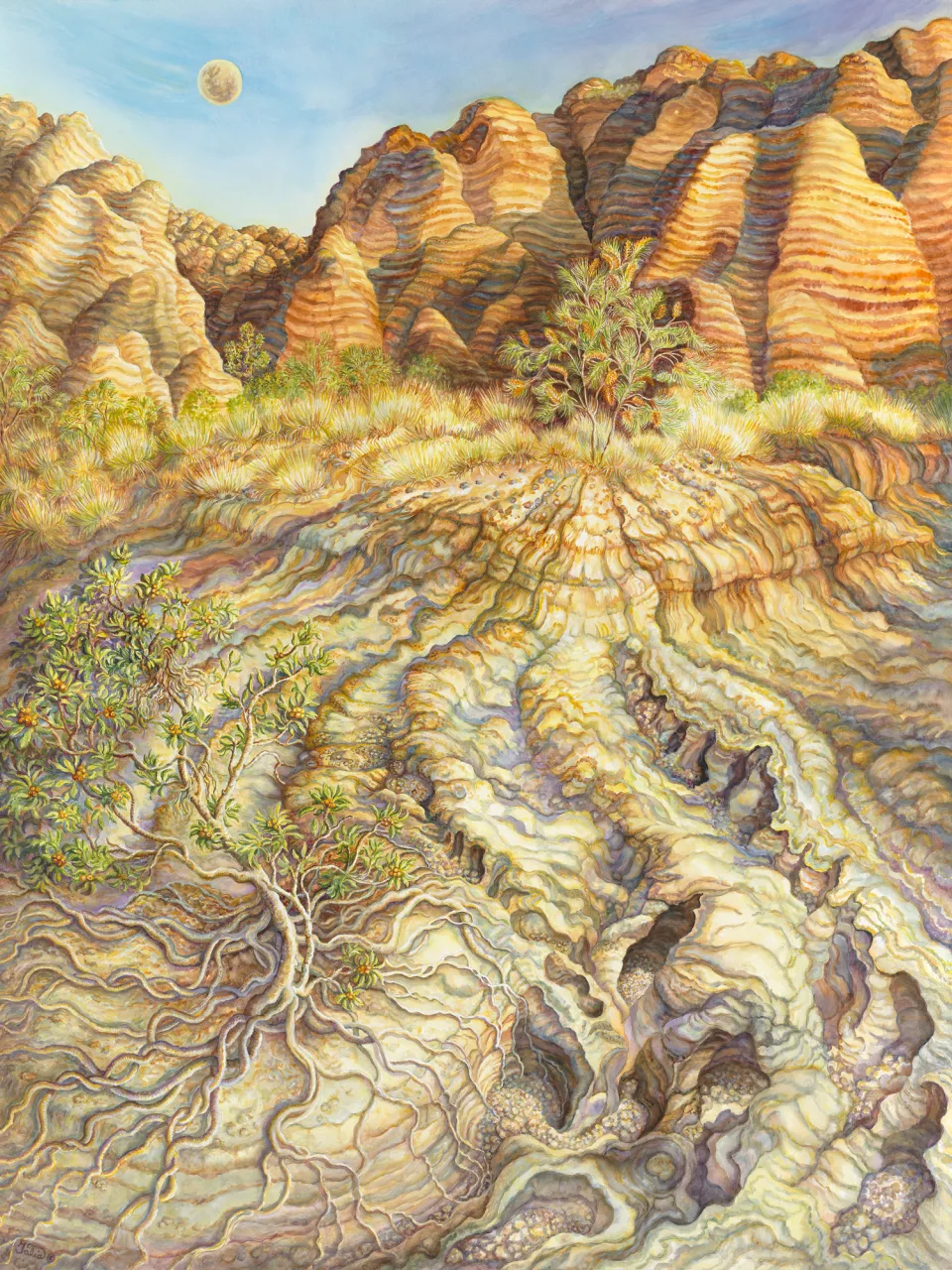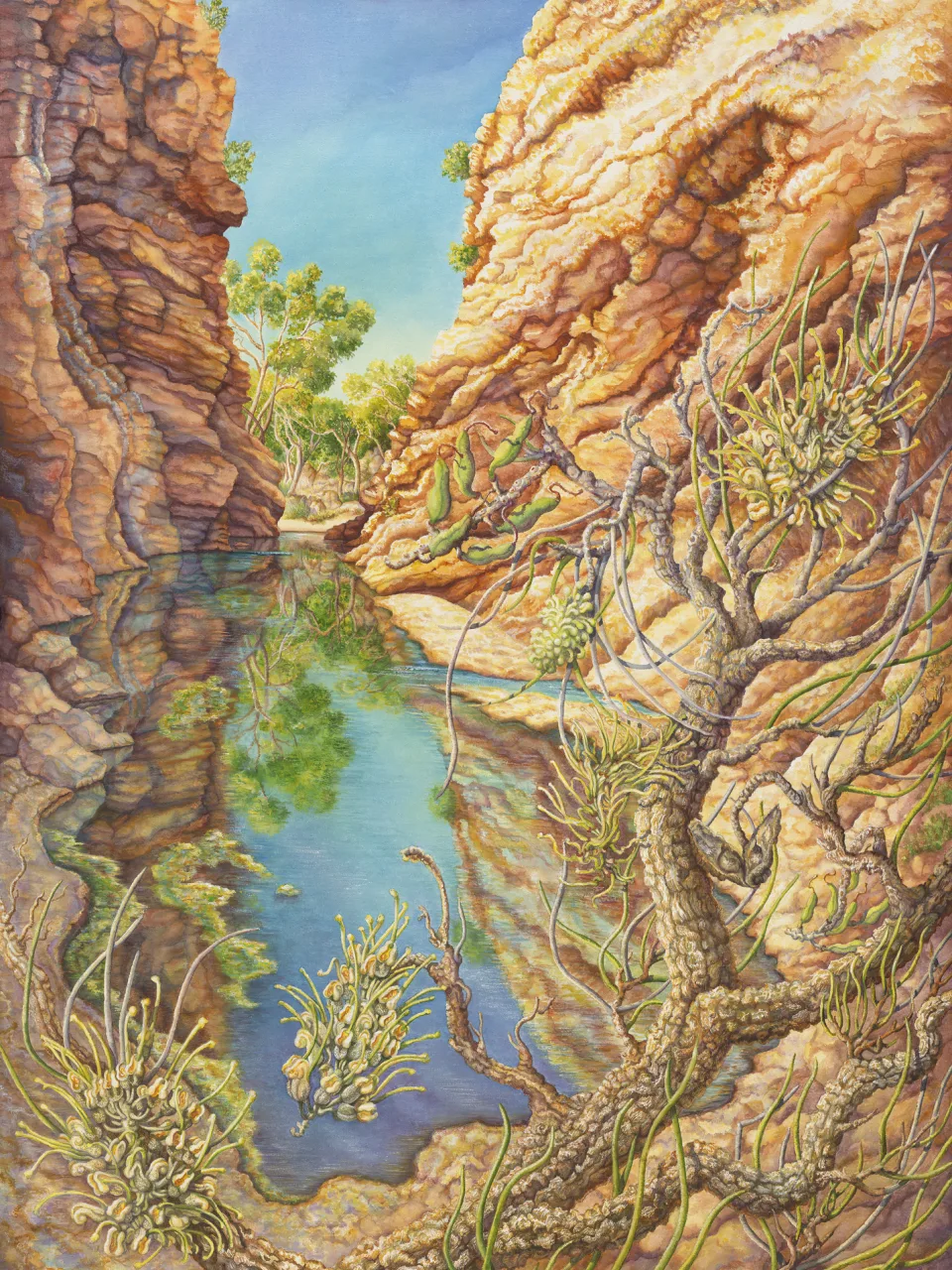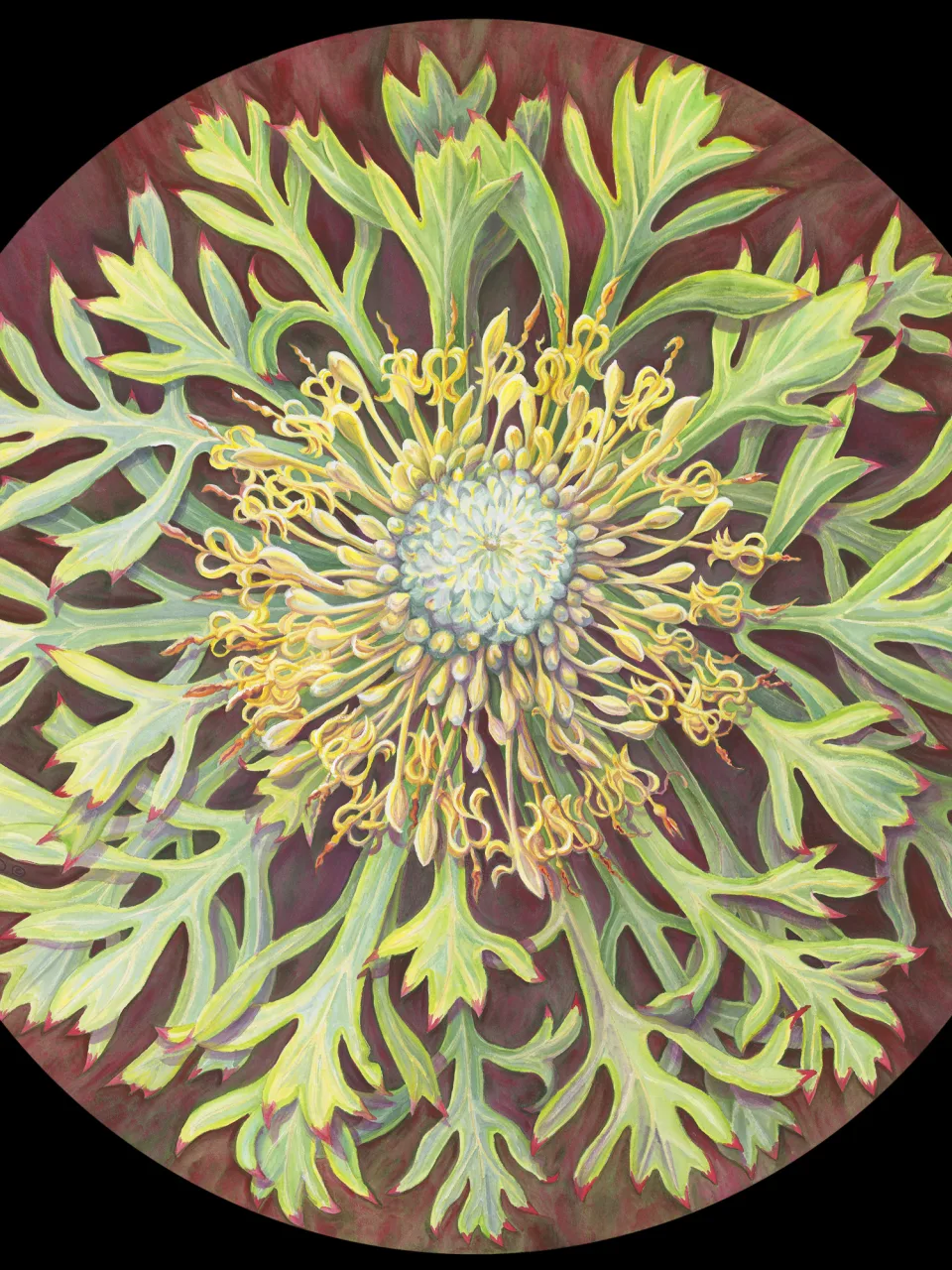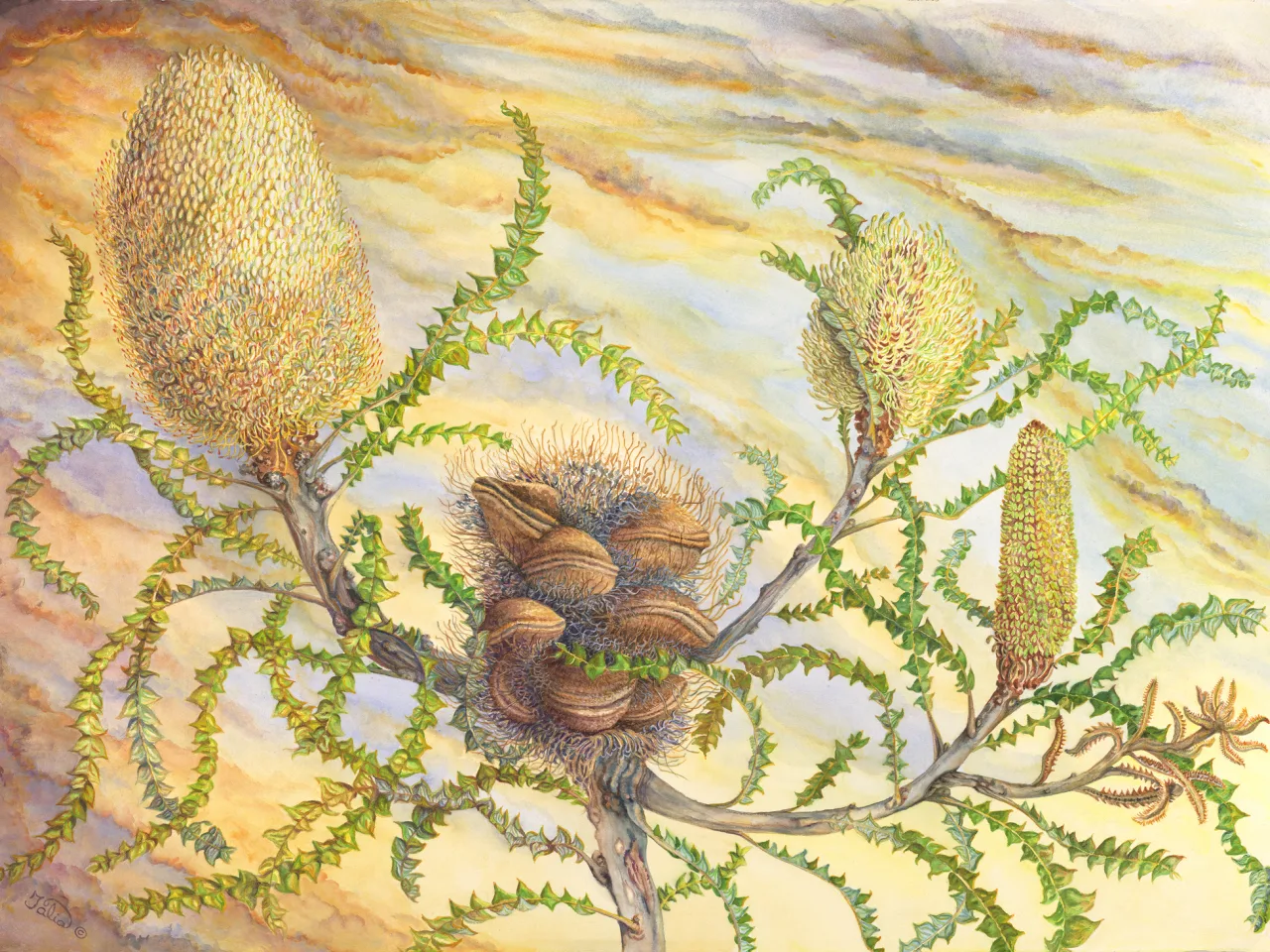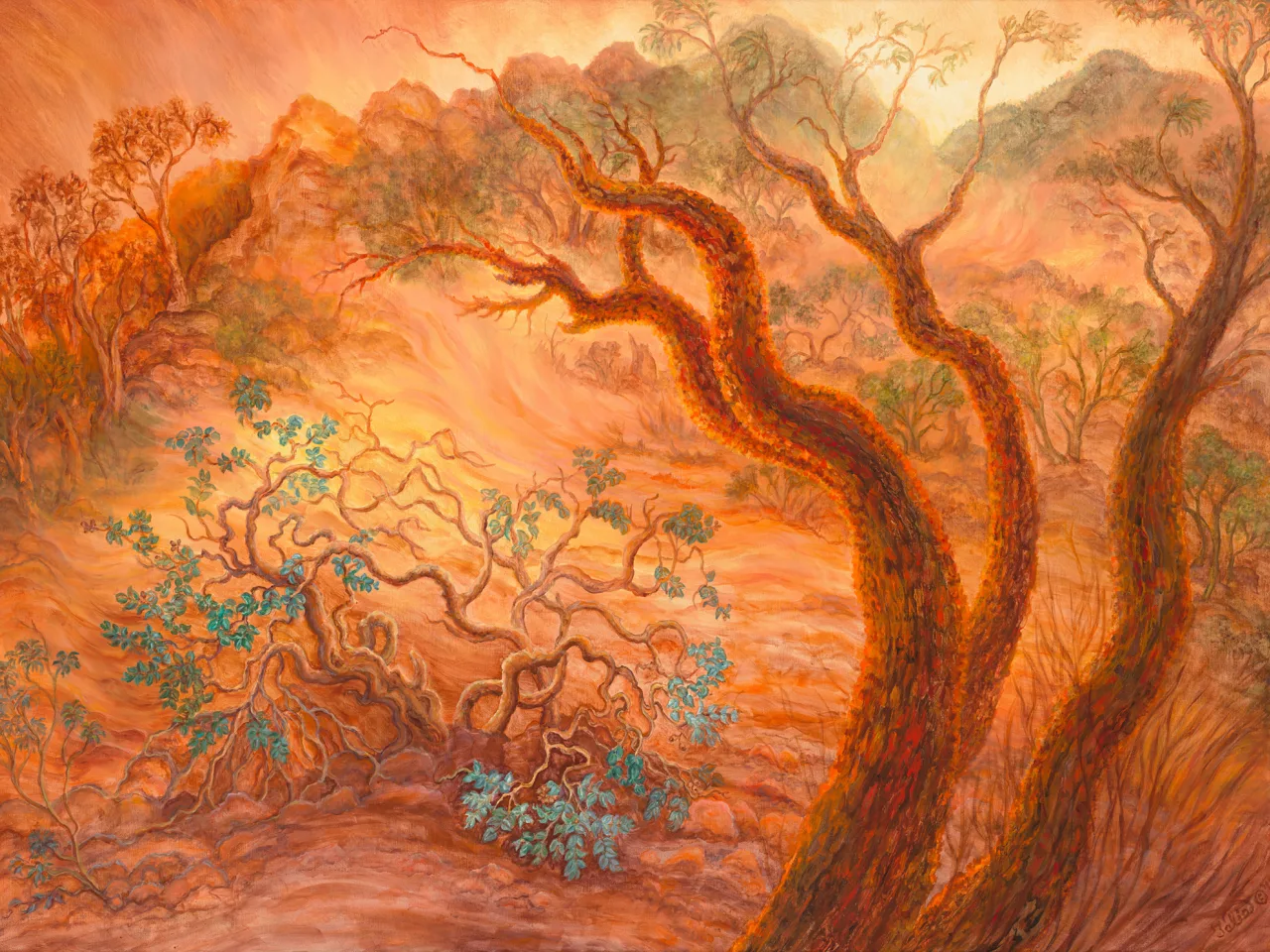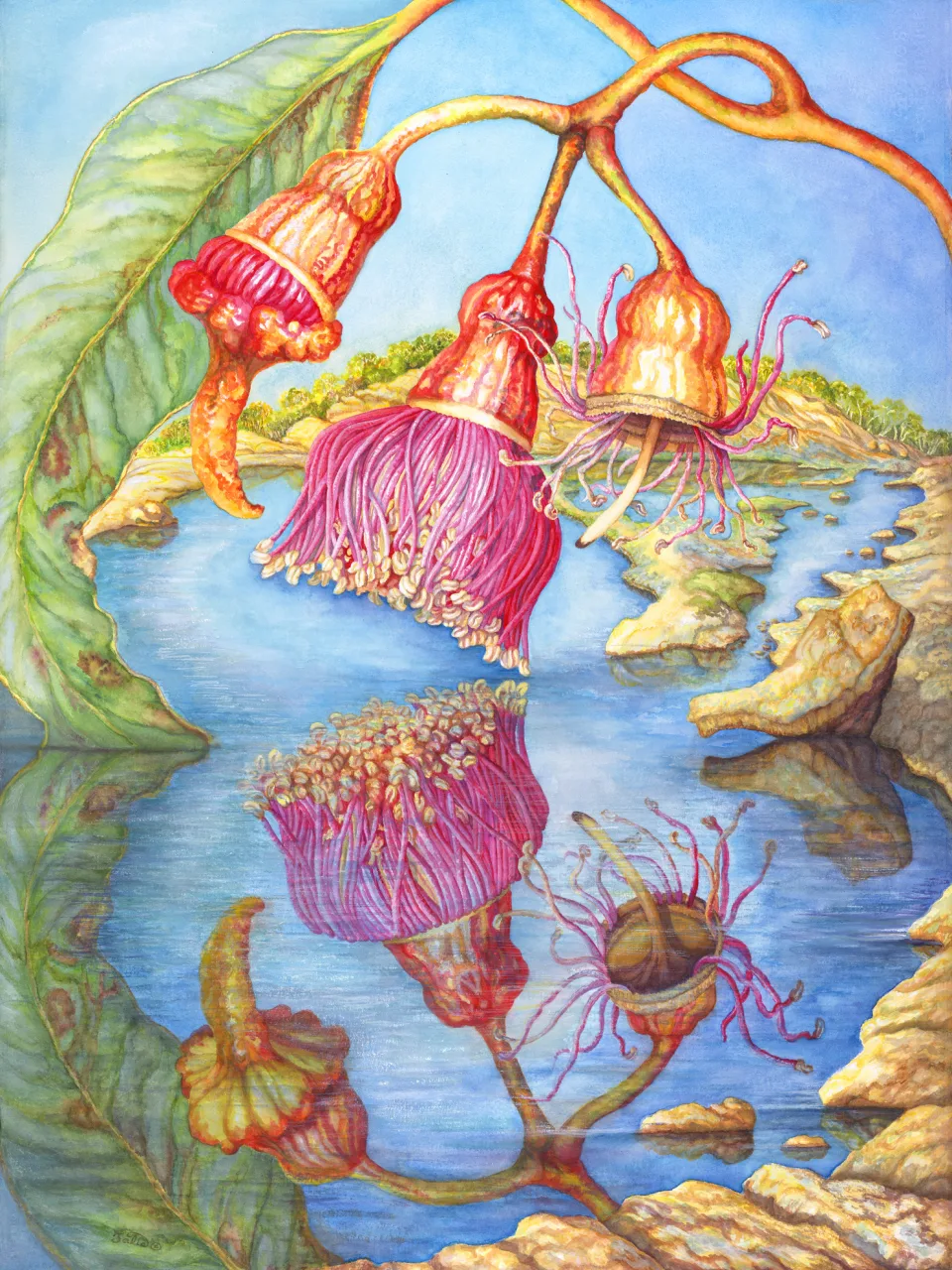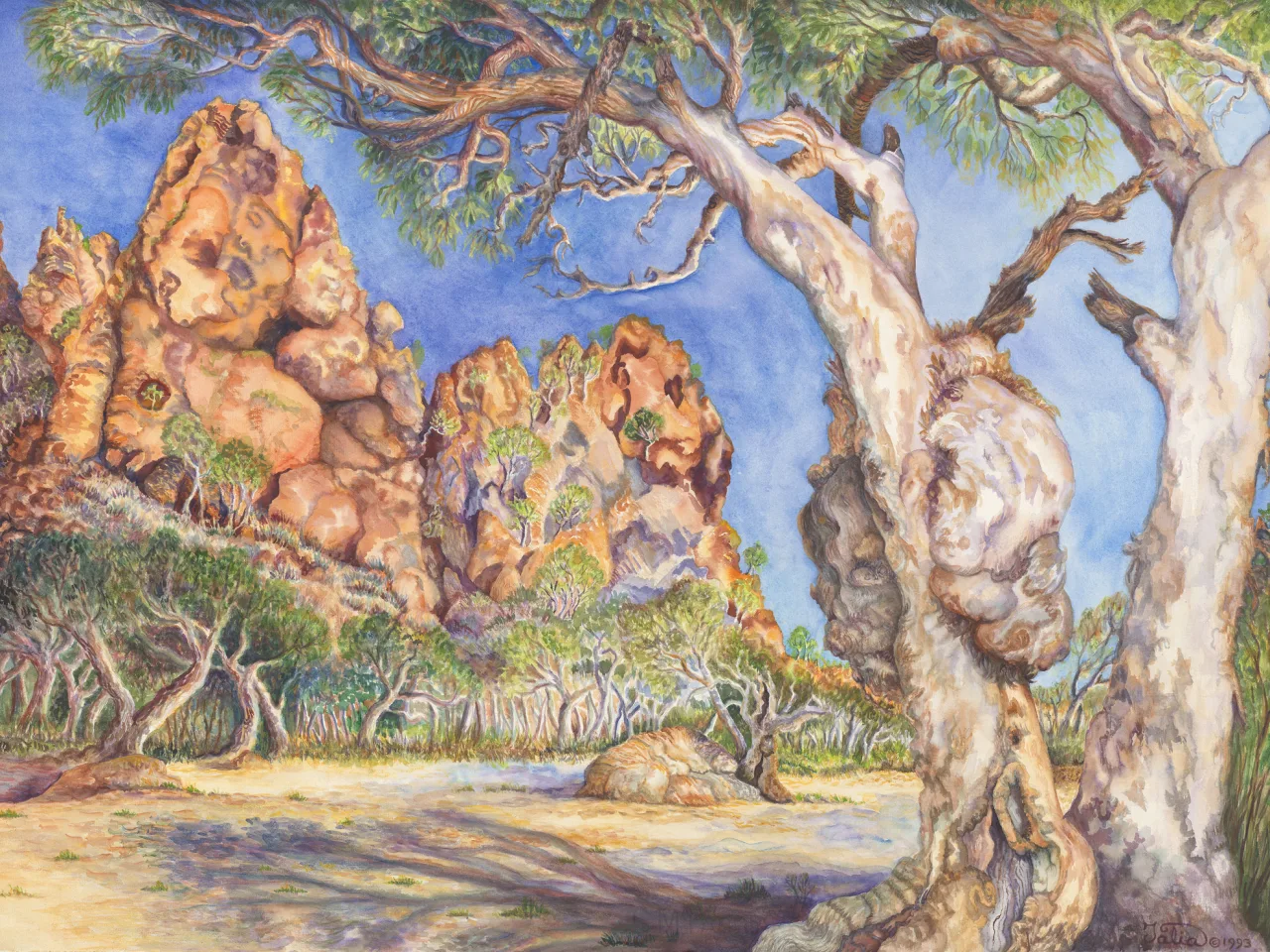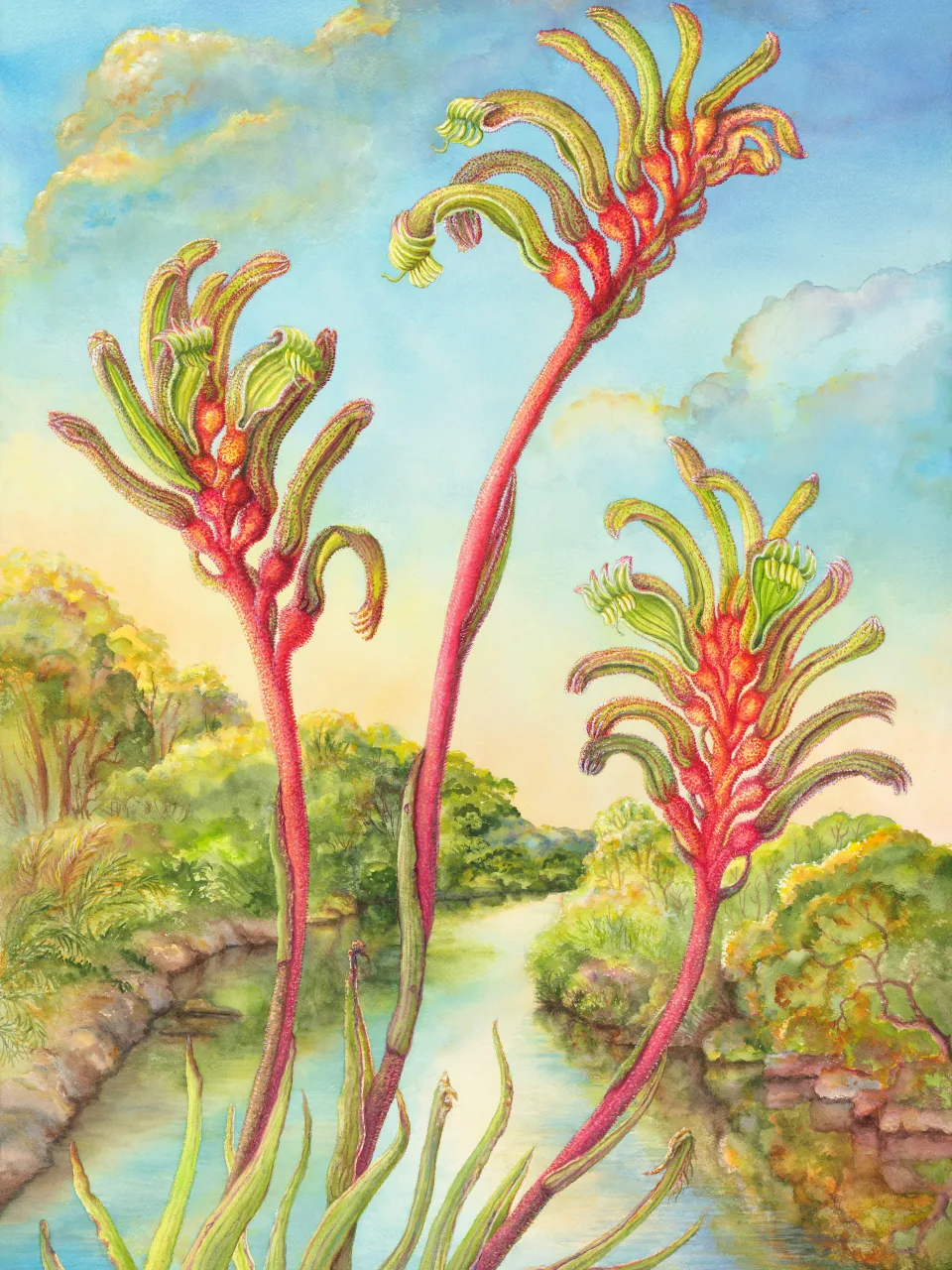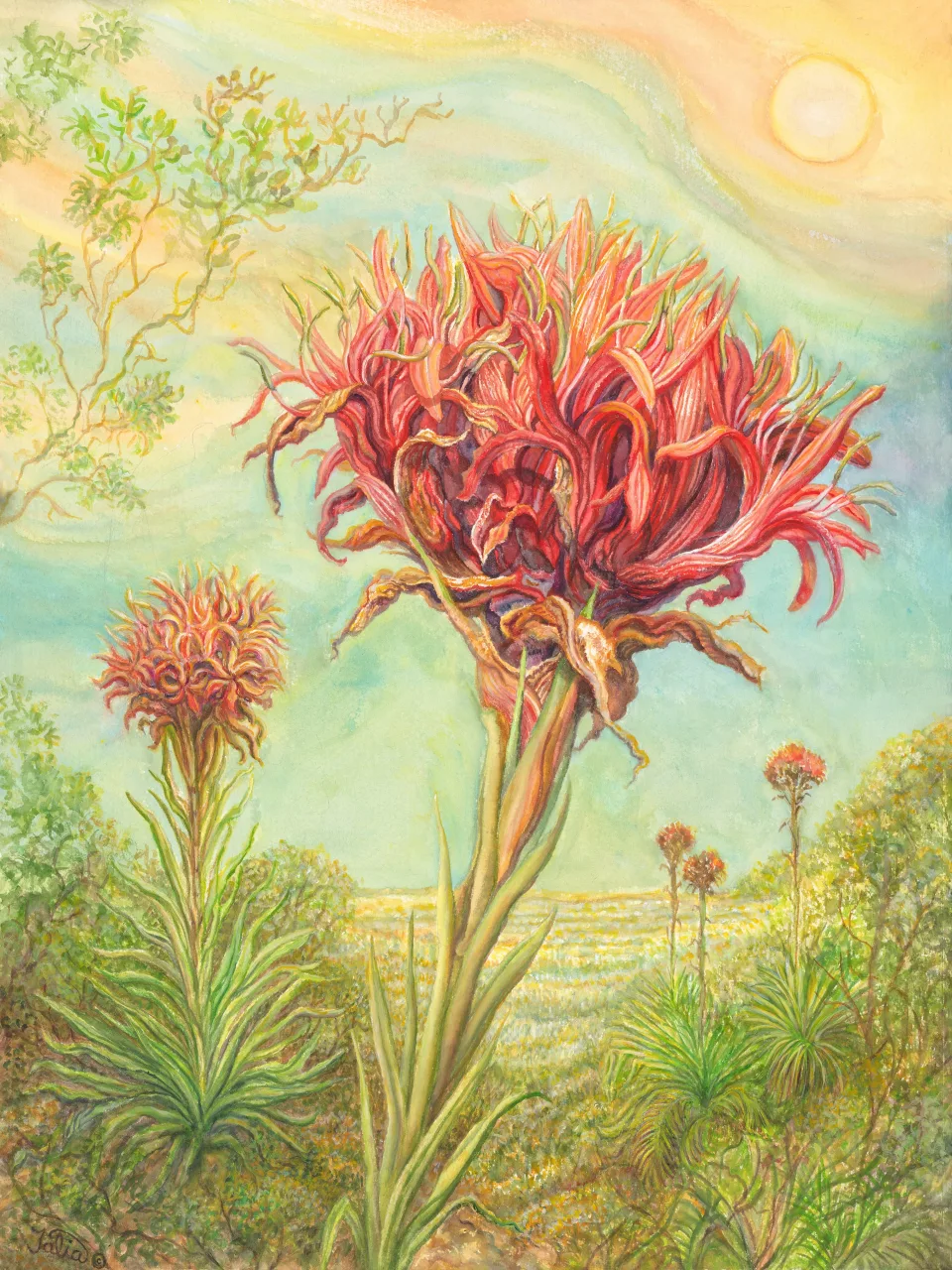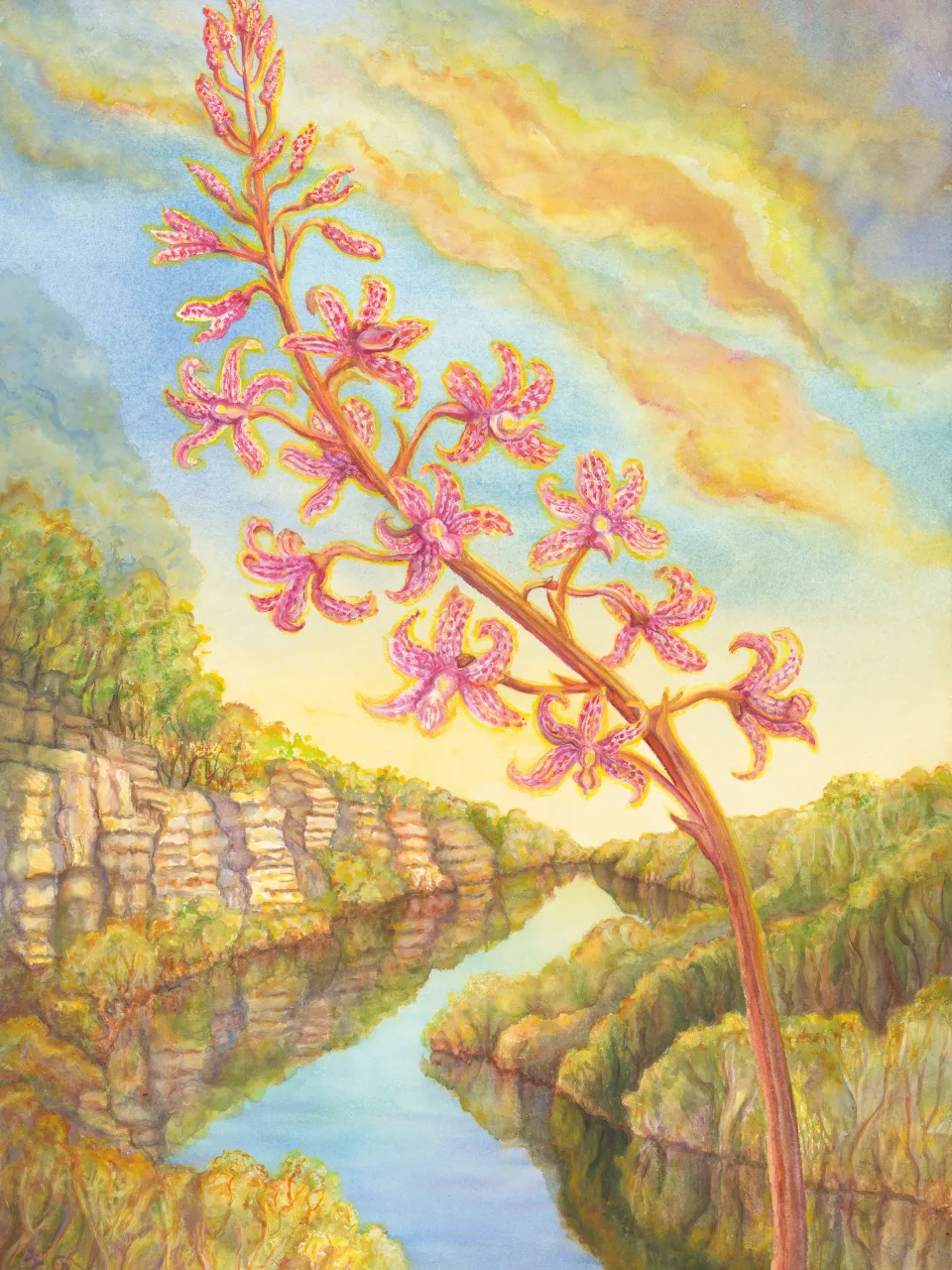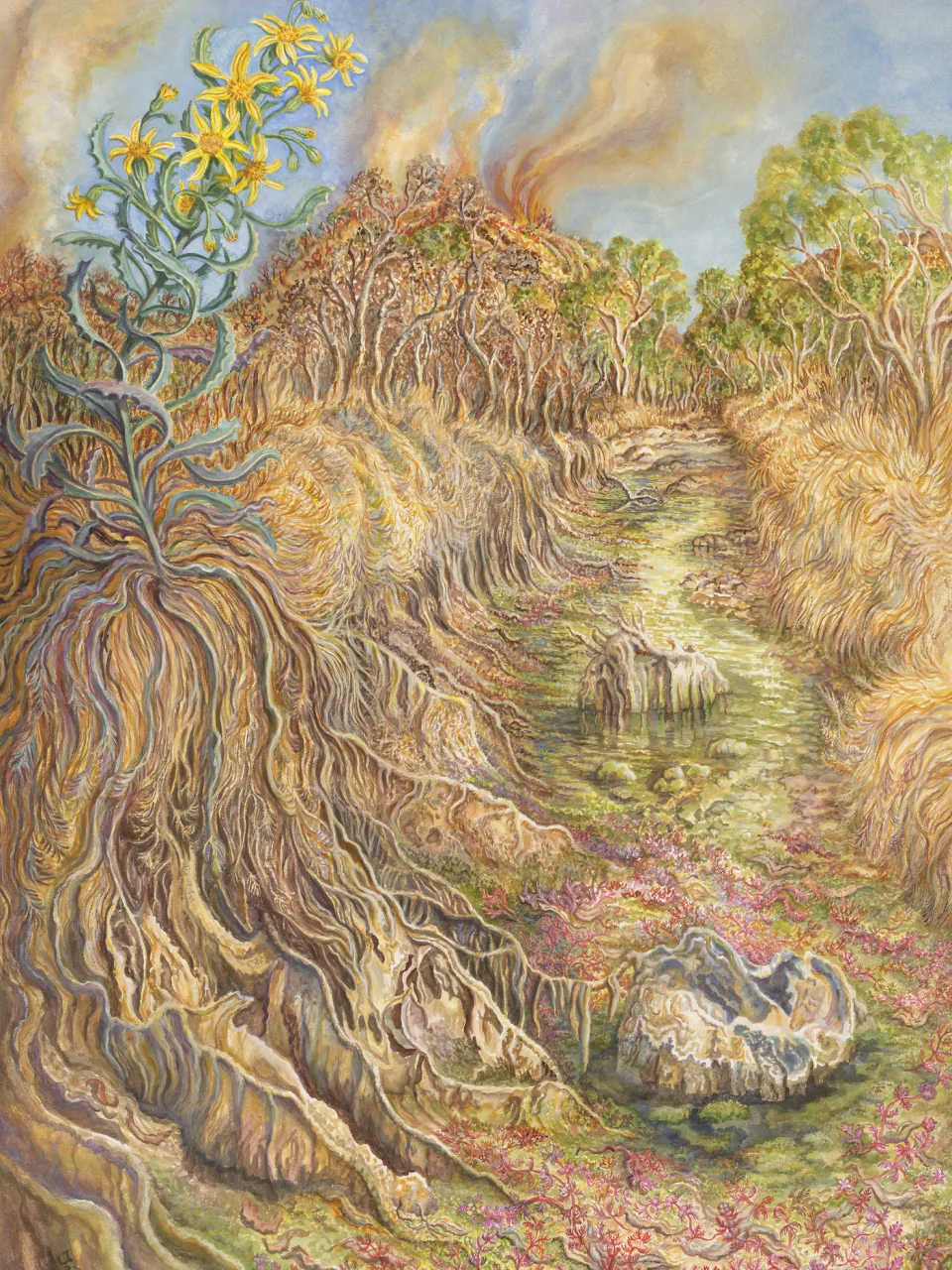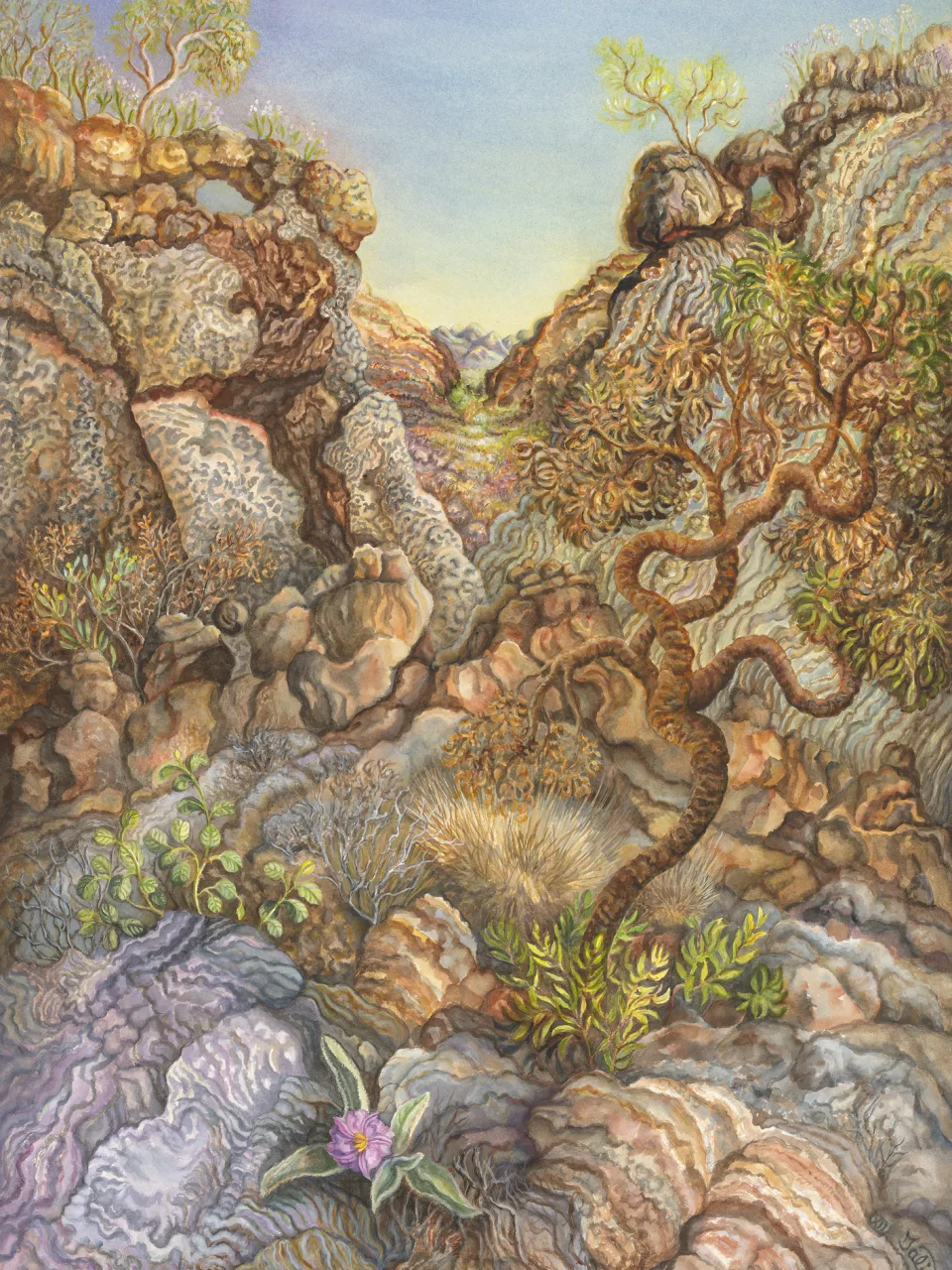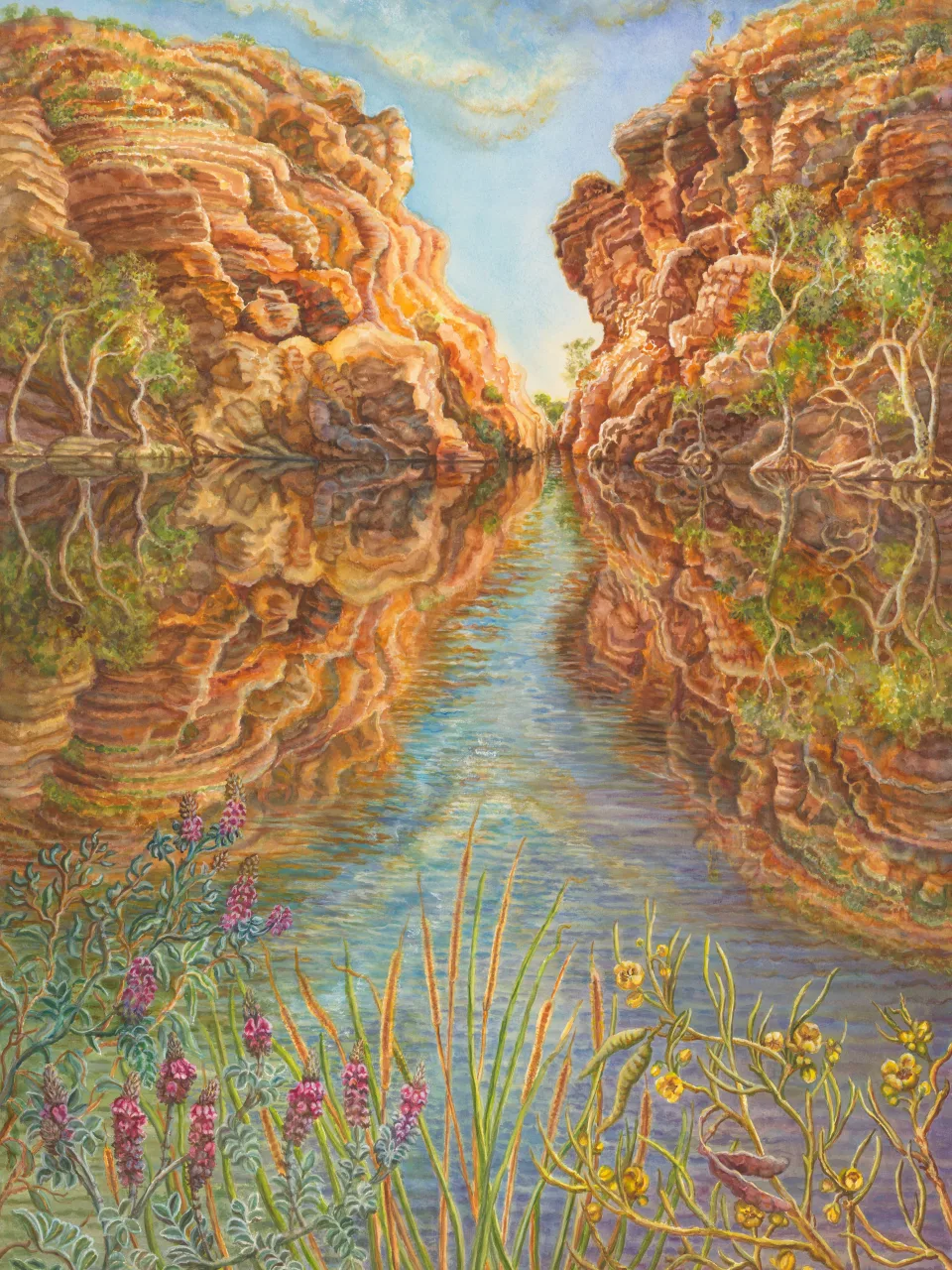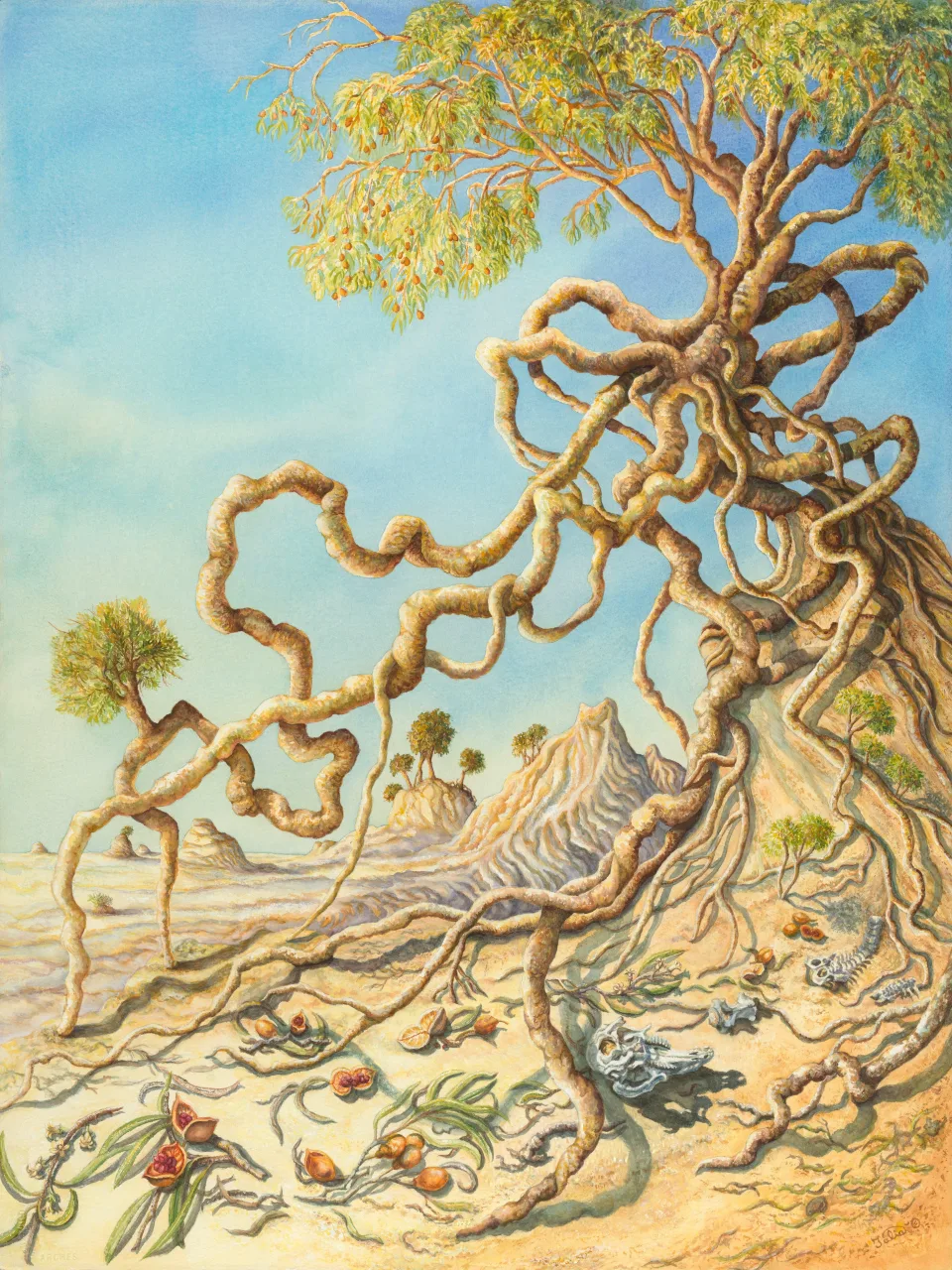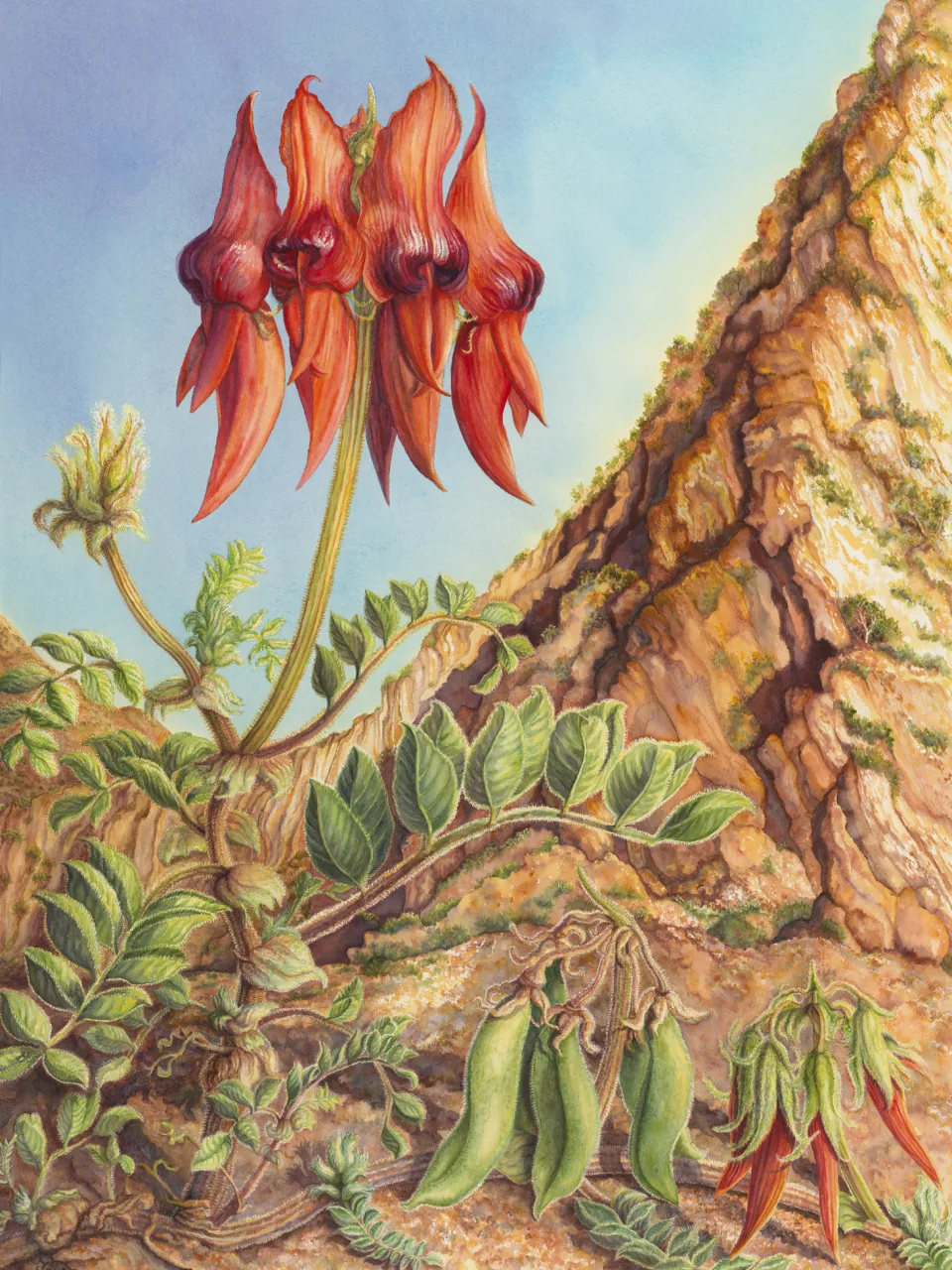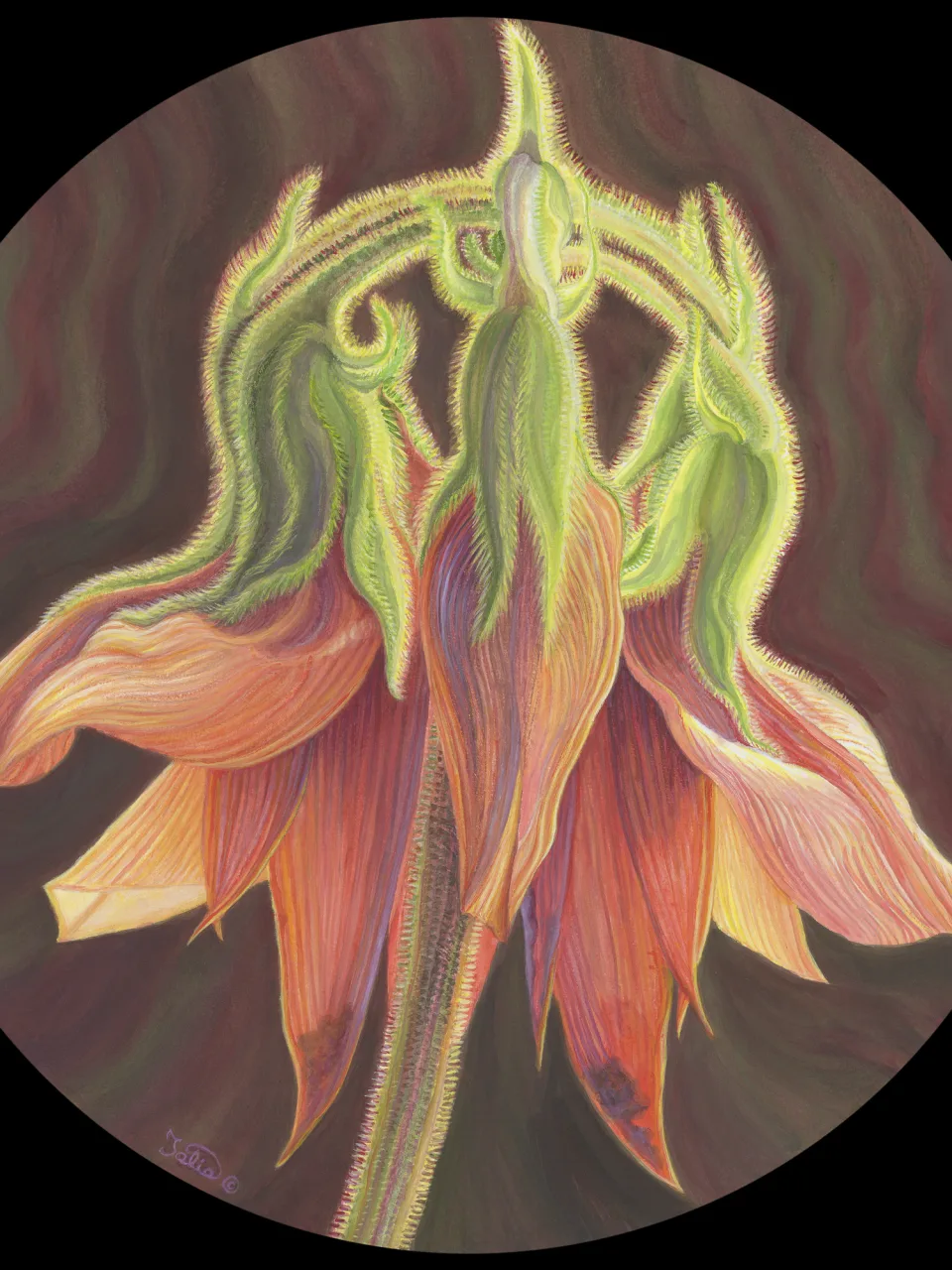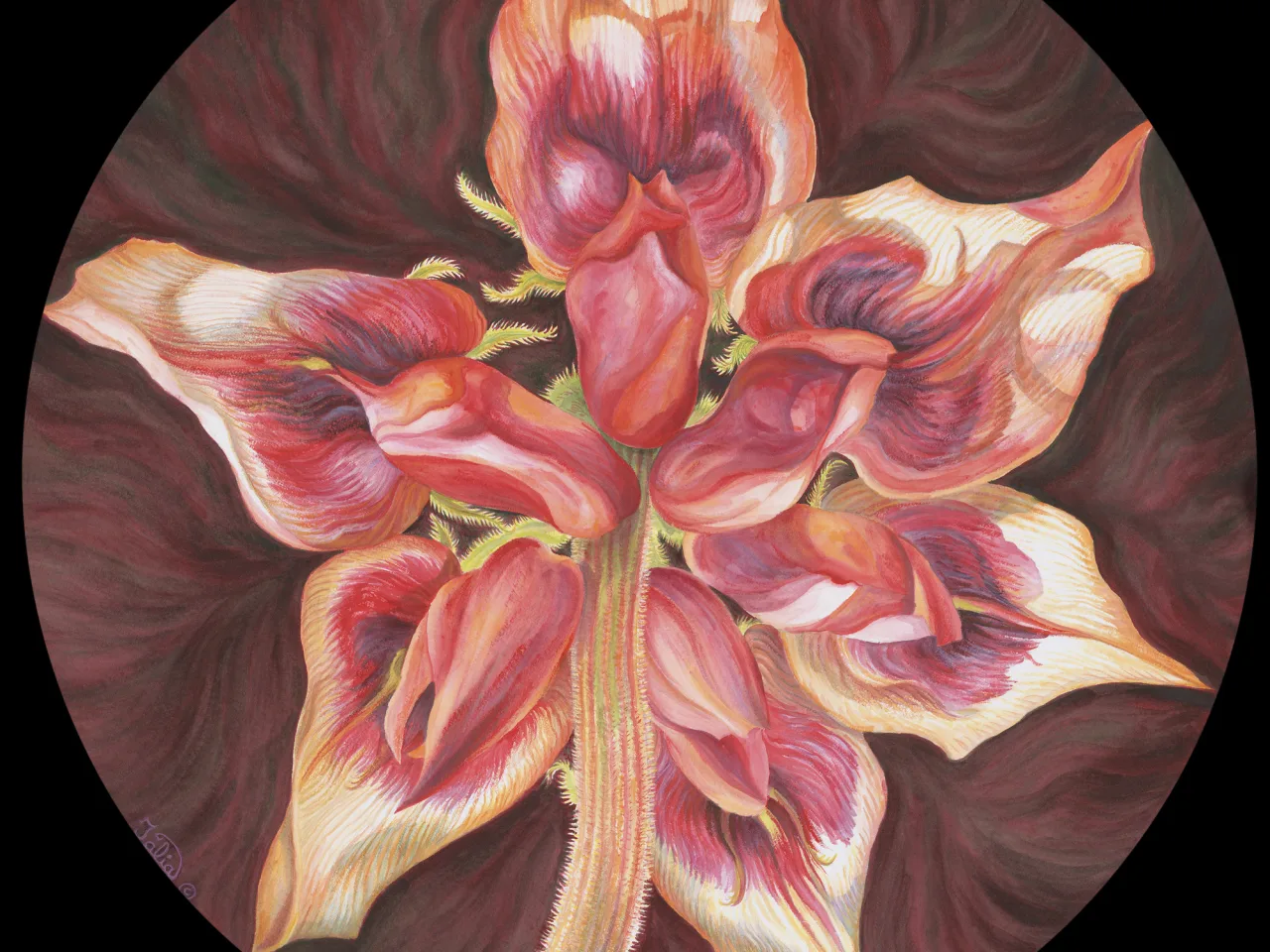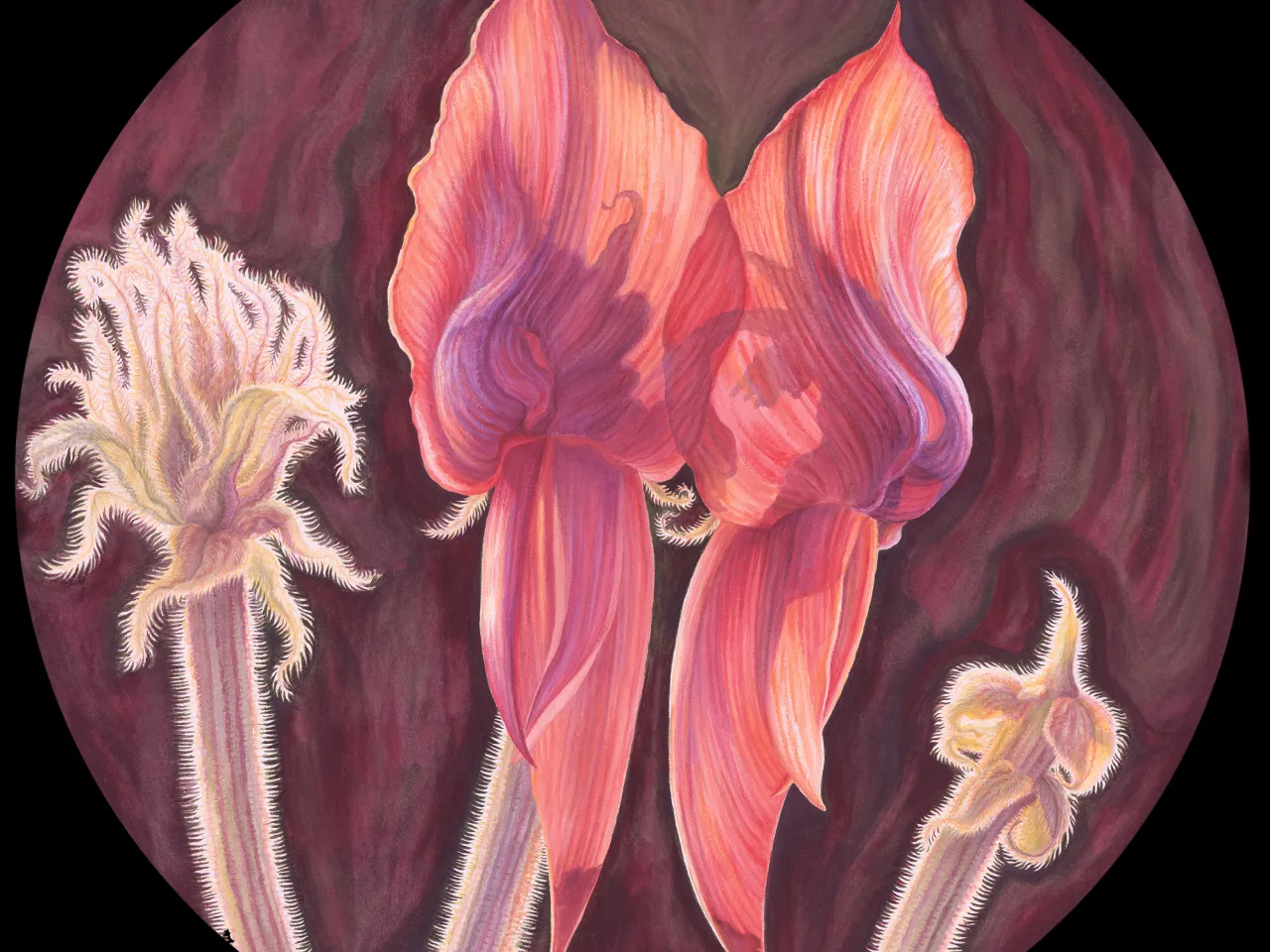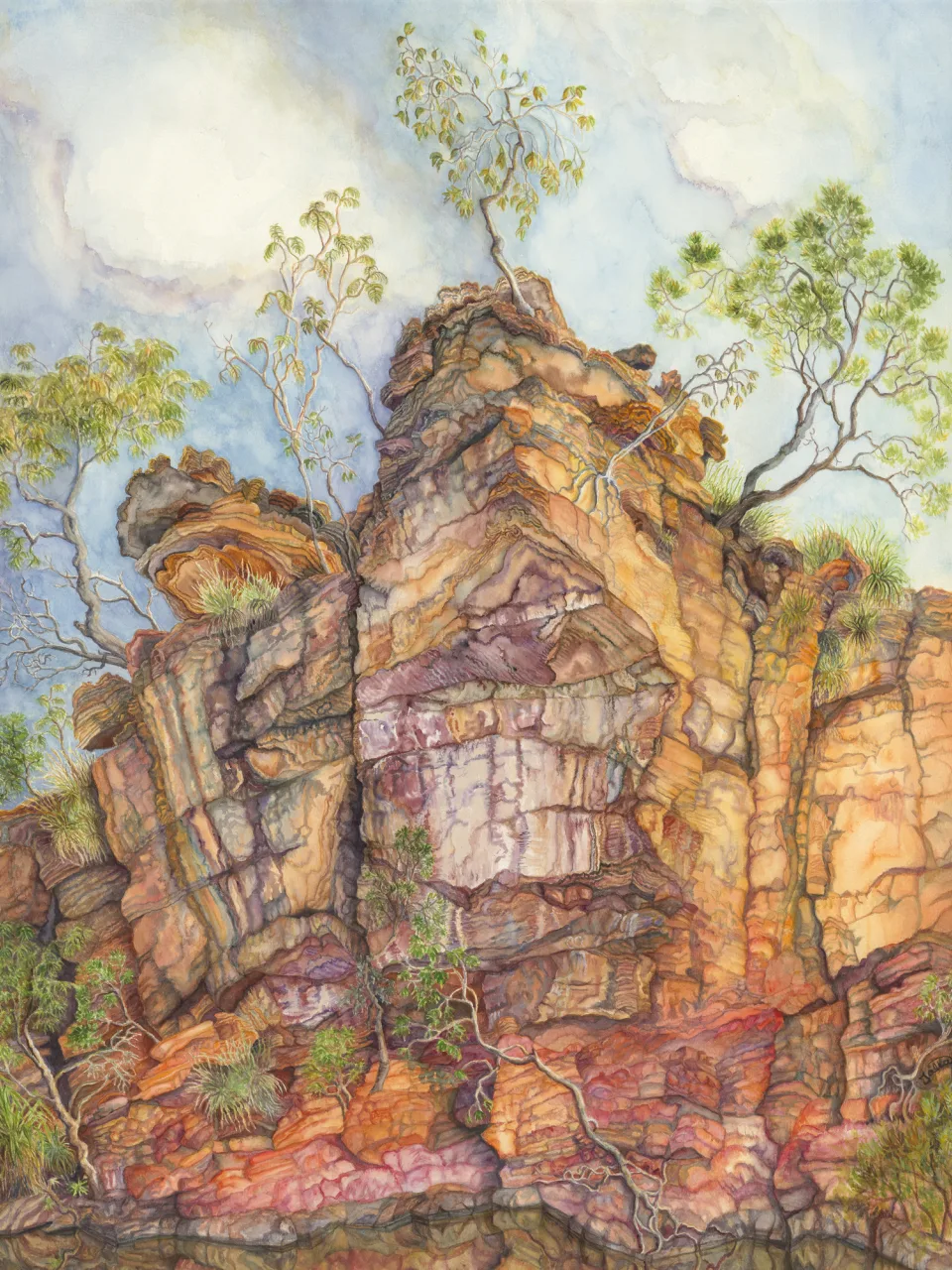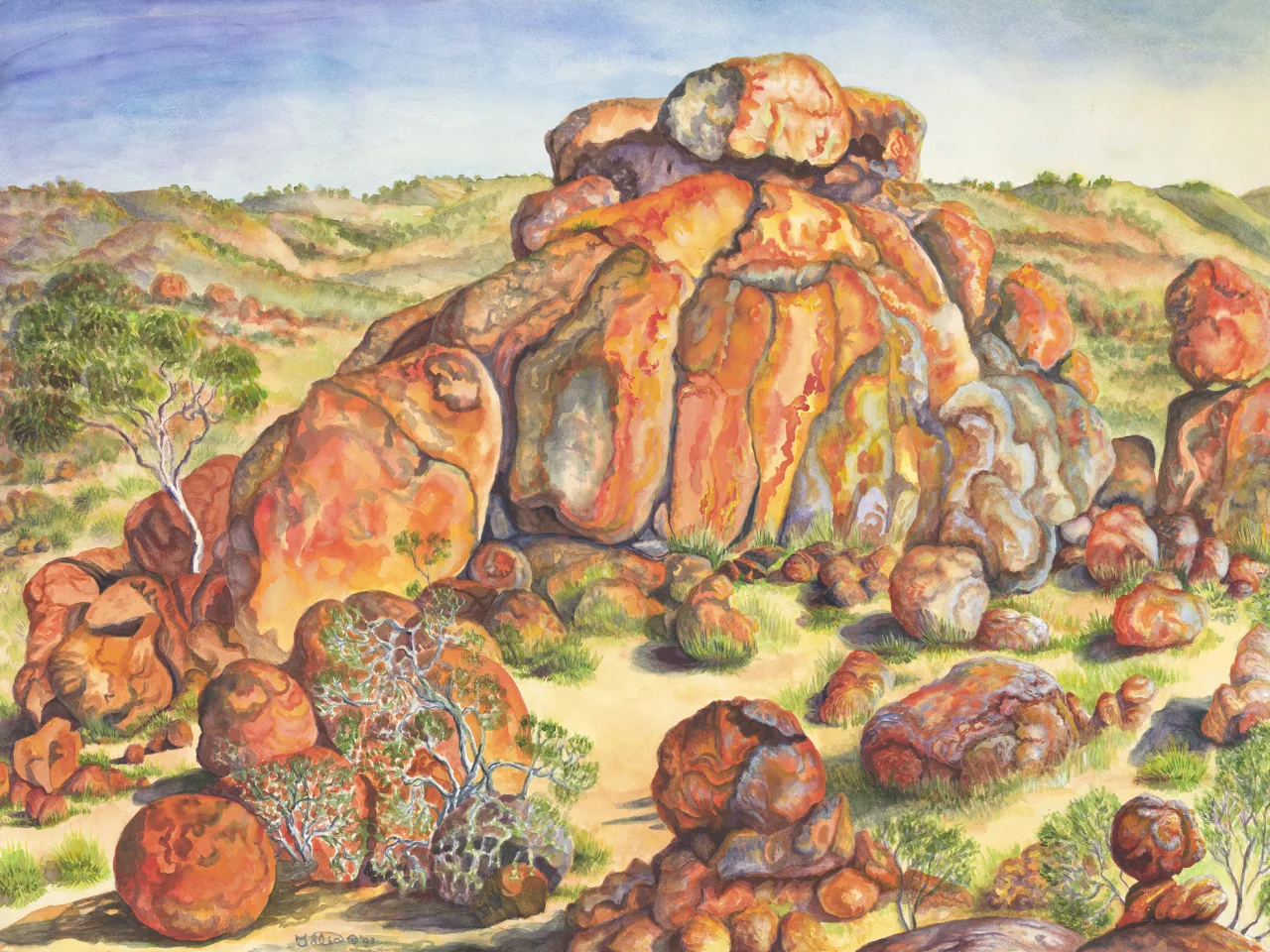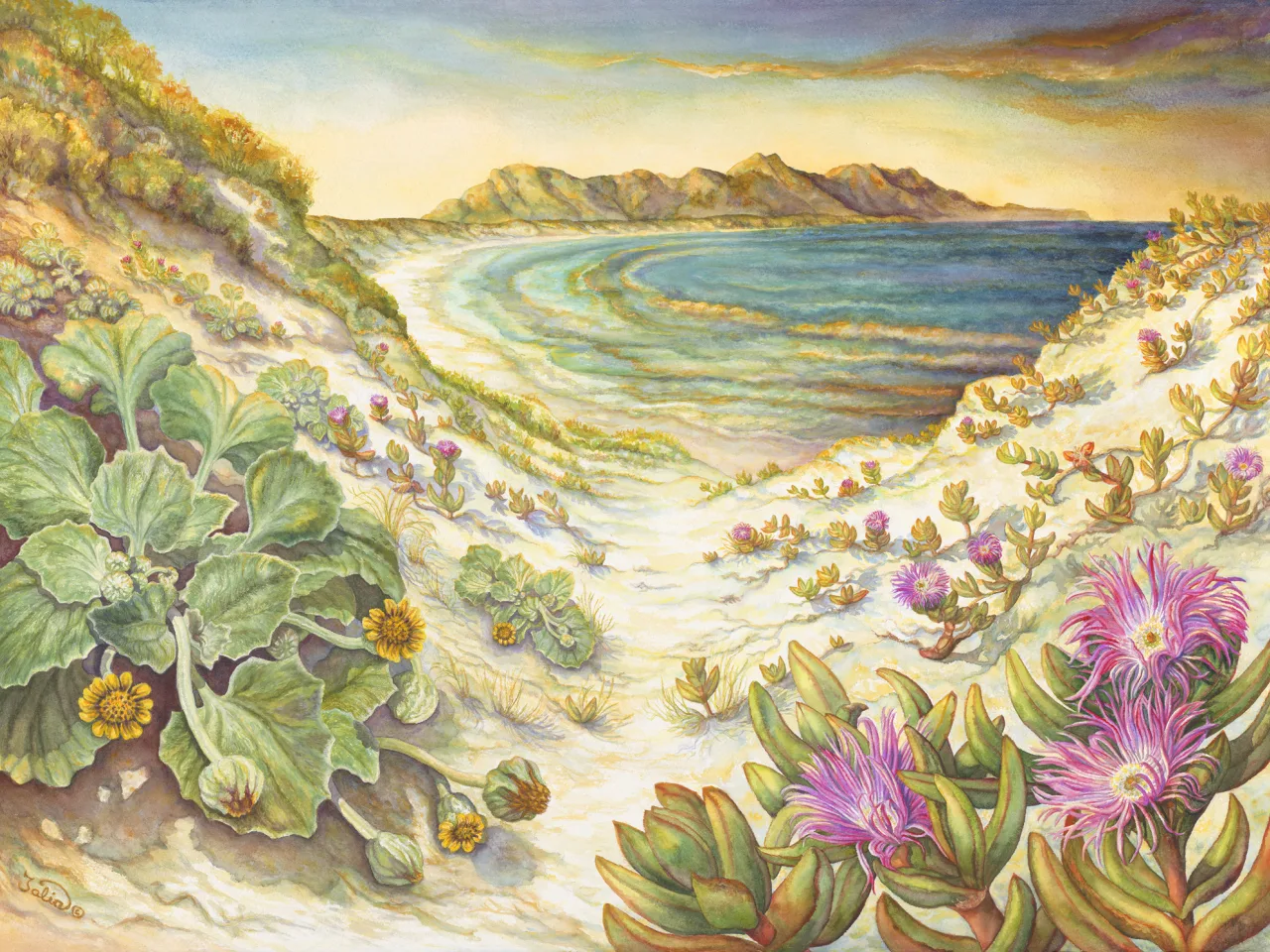Artwork 2 Elegant Algae
Section 2
Green Algae —“Ancestors to all Higher Plants”
D’Estrees Bay, Kangaroo Island, South Australia, South Australia
- 1. Caulerpa flexilis (green algae)
- 2. Codium harveyi (dead man’s fingers)
- 3. Cystophora racemosa (brown algae)
- 4. Hormosira banksii (Neptune’s necklace)
- 5. Posidonia australis (southern strap-weed)
- 6. Ulva sp (sea lettuce)
Artwork 2
Buy a print
Limited edition giclee archival quality print on 310 gsm Ilford cotton rag (from an original work in watermedia on watercolour board, 66 cm high x 56 cm wide)
from the artist
Elegant Algae seeks to express the movement and flow of seaweeds as they are gently washed around in the surge and retreat of ocean waves. On a sunlit day with aqua blue ocean and wafting white clouds, we beach-roamed and photographed many colourful algae along the weed-strewn beaches and rugged shoreline of D’Estrees Bay.
The green algae are central to this artwork as they are believed to be the ancestors to all “higher plants” (White, 1986, p. 23). The swirling plants we admired had already diverged into three main groups by 400 mya—green, brown, and red algae. All three are represented in this painting.
Algae are a diverse and ancient group, and microscopic fossils have been discovered in offshore shales dated to a possible 2,100 and definite 1,800 million years ago (Hill et al., 1999, p. 254).
The earliest life on land may well have been simple unicellular algae, soil-forming bacteria, and cyanobacteria. However, a vital first step in moving life from the seas to the land was the development of larger and more complex cells than these simple prokaryotic cells—eukaryotes, which are capable of evolving into multicelled plants and animals. Advanced algae (eukaryotes) had evolved by at least 850 mya and there are about 8,000 living species of eukaryotic green algae today (Kenrick & Davis, 2004, pp. 15–19).
Sea lettuce (Ulva sp.) represents an interesting example of experiments in evolution at work. They reproduce by a process called “alternation of generations”, and variations on this theme are still at play in all plants today (White, 1986). Basically, there is a two-stage life cycle. One involves asexual reproduction (mitosis) and the second stage is sexual reproduction (meiosis) when spores are produced.
One plant included here (Posidonia australis (southern strap-weed)) is actually an angiosperm—a flowering land plant! Seagrasses are land plants adapted to life in the sea or in estuaries. The earliest seagrass fossils are about 100 million years old (Edgar, 2000/2003, p. 19). It is intriguing to think of some forms of early plant life moving from the water onto the land—and others several millions of years later, reversing the trend and moving back into the sea from the land!
